


Interpreting cultural differences: Arabic-Czech online tandem experience
Adela Provaznikova is an Arabic language instructor at the Department of Middle Eastern Studies at Charles University in Prague where she teaches courses of Modern Standard Arabic and content courses on the Arab Nahda. For her PhD project, she researches the translation movement into Arabic in the late 19th century. She has studied in Prague, Cairo and Aix-en-Provence, taught Arabic and Czech at private language teaching institutions and occasionally translates.
It has long been established that tandems are an effective tool for enhancing student’s metalinguistic reflection and learner autonomy (Appel & Mullen, 2000) as well as intercultural competence (Calvert, 1999). When the principles of reciprocity, responsibility and autonomy are respected, the planned encounters between students to facilitate the learning of their respective languages can have a positive impact not only on students’ linguistic capabilities, but also on their motivation and social skills (Webster, 2019). However, it has been suggested that prior experience (Frances et al., 2018) as well as previous mastering of specific learning strategies (Webster, 2019) can significantly improve the tandem experience. Based on personal interviews with participants in a Czech-Arabic online tandem organised by Charles University in Prague and Ain Shams University in Cairo, and content analysis of the participants’ written weekly reports, this paper investigates the differences in language learning strategies and their cultural underpinnings. It asks how students interpret and evaluate such differences and how they connect them with other explicitly discussed cultural distinctions and their own learning. It argues that intercultural awareness of differences in learning styles needs to be addressed in tandem settings to avoid frustration and enhance both language and culture learning.
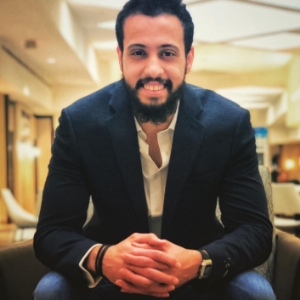
Examining Variation in Arabic Heritage Language Competence: Evidence from the Use of Negation in Egyptian and Damascene Arabic
I am a PhD candidate at the department of Middle East Studies at the University of Michigan. I study Arabic Applied Linguistics and Second Language Acquisition. I am focusing on Arabic Heritage Language Acquisition research.
This presentation provides a critical analysis of the hypotheses regarding the nature of heritage language (HL) competence. It identifies certain methodological limitations in the HL research and proposes an empirical study that aims at addressing these limitations in Arabic HL acquisition research. It has been demonstrated that HLs are not merely composed of random gaps; rather, they are systematic and constrained. Areas of resilience and susceptibility to various effects are observed in the data. Structural complexity and interfaces between different domains are argued to be among other linguistic determinants of the developmental trajectories of particular linguistic features. On the other hand, individual factors such as input quantity and quality, and the age of onset of bilingualism seem to also have an impact on the proficiency of heritage speakers. Thus, HL proficiency is not uniform and significant variation appears inherent in the acquisition of HLs. This variation poses a challenge for researchers and language practitioners, as they must consider various linguistic and individual factors to maintain the homogeneity of their heritage groups and prevent inaccurate extrapolations. The study proposed in this presentation aims at taking precise linguistic and individual measures to answer the following questions: does structural complexity affect the variability of Arabic HL competence? If so, would the varying morphosyntactic complexities of Egyptian (more complex) and Damascene (less complex) Arabic help the Damascene Arabic heritage learners outperform their Egyptian counterparts in the use of negation? How do other individual factors, namely input quantity and quality, and the age of onset of bilingualism affect this variation? As preliminary answers to these research questions, results from the pilot study and classroom observations will be provided. Also discussed will be the pedagogical implications of the nature of the HL competence and proficiency.

A Translanguaging, Multidialectal Approach to Inclusion in the Arabic Classroom
Aidan Kaplan teaches Arabic at the University of Chicago, where he is an Assistant Instructional Professor in the Department of Near Eastern Languages & Civilizations. He holds an MA in Teaching Arabic as a Foreign Language from the Middlebury Arabic School, an MA in Middle Eastern Studies from the University of Chicago, and a BA in Linguistics from Yale University.
A Translanguaging, Multidialectal Approach to Inclusion in the Arabic Classroom
The debate over how to handle the different varieties of Arabic in the classroom stretches back decades. Today, there is consensus that students of Arabic must ultimately be able to engage with both the formal register of the language (MSA or fuṣḥā) and the colloquial register (‘āmmiyya, dārija, etc.), but there is considerably less agreement on how to accomplish this. In a recent article, “The Mutual Intelligibility of Arabic Dialects,” Emma Trentman and Sonia Shiri present a novel way to deal with the rich sociolinguistics of Arabic in the classroom: a multidialectal approach. In this approach, students are exposed to multiple varieties in the receptive mode, and instructors explicitly help build metalinguistic awareness about the differences between varieties, including phonological, morphosyntactic, and sociolinguistic factors. Students are not expected to speak all dialects, but rather, they have “the agency to choose to use the varieties that reflect their own exposure or desired identities” (Trentman & Shiri 2020).
In this paper, I present the implications of adopting a multidialectal approach for the fostering of an inclusive classroom community. Creating an intentionally multidialectal classroom calls on the instructor to adopt translanguaging pedagogies, which center students’ identities as whole, complex persons. In many spheres, including education, there has been increasing emphasis on diversity, equity, and inclusion (DEI), and this approach helps make the Arabic classroom part of this larger movement. Among other benefits, a multidialectal classroom allows students from Arabic-speaking families of diverse national origins—for whom traditional Arabic classes can be a site of alienation—to feel that their voice and their home language variety are valued. Drawing on interviews with students, as well as classroom experience, I argue that a multidialectal approach has a positive impact on students’ motivation and their feeling of belonging, which are ultimately the foundation for successful learning.

مسرحة المناهج في تعليم العربية في المدارس الدولية

Arabic Study Abroad Programs - the Case of YSU Arabic Studies Students in Jordan
Learning Arabic in a non-Arabic-speaking country where there are limited chances to use the language in an authentic way.
On the other hand, according to Kinginger (2009), studies on study abroad have revealed wide variations in students' levels of contact with locals and their linguistic performance.
The paper finds out the challenges Yerevan State University students face during the study abroad program regarding linguistic and cultural challenges.
Diglossia, the local spoken dialects, and lack of exposure to the Arab culture within its context are some of the challenges they try to overcome, as reported by former participants of the Arabic study-abroad university program through a survey and a focus group.
Moreover, the paper seeks to reveal whether there are differences in those challenges according to the gender of the students and the previous knowledge they get from their home universities before participating in the study-abroad program offered through their university.
"At first, when we arrived in Jordan, it was complicated for us to speak Colloquial Arabic because it was different from what we had learned at home university. Nevertheless, then, gradually, we learned it." a former participant from the study reported.

THE PROBLEM WITH OPIs
TEACHING PROFESSOR, DIRECTOR OF THE ARABIC PROGRAM, UNIVERSITY OF PITTSBURGH
With the increasing importance of Arabic as a critical language, Arabic programs in US universities have made several revisions of the methods they apply in teaching the language. Most importantly, the focus on the communicative approach necessitated the teaching of dialects, and consequently the testing of learners’ proficiency in colloquial Arabic. Arabic language educators have been encouraged to seek certification as oral proficiency testers; the American Council on the Teaching of Foreign languages (ACTFL) offers training workshops for educated native speakers of Arabic dialects, and students of Arabic who are preparing for government jobs overseas and other similar posts in Arab countries are required to obtain a certified proficiency document from ACTFL.
This presentation discusses issues that the oral proficiency interview poses for testers as well as for testees generally and discusses the specific problems that pertain to Arabic interviews. It also examines the reliability of the ACTFL oral interview as an accurate gauge of Arabic language proficiency, surveys efforts made to address certain issues, and suggests further actions that need to be taken.
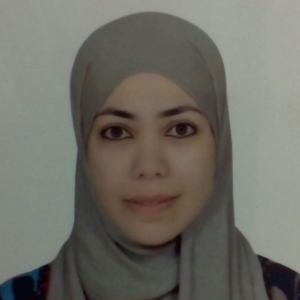
By All Memes, I want to learn Arabic: Teachers’ and Students’ Perceptions of Using Memes in AFL Classrooms”
A TAFL Fellow and TA
As educational technology advances, teachers nowadays tend to incorporate technology into their classroom practices to enhance students’ learning and achieve better outcomes. Memes, which are pictures with texts and sometimes movements circulated mostly among social media users, are a powerful tool to reach learning goals in a fun and engaging way. Researchers explored memes’ effectiveness in various disciplines, yet the field of teaching Arabic as a foreign language (AFL) lacks investigation in this area. Therefore, this study aims to examine teachers’ and students’ perspectives on the use of memes in the classroom. This research will also explore the disparities in perceptions and the reason(s) behind them. A mixed methodology is adopted where a questionnaire is utilized along with semi-structured interviews. Findings demonstrate a shared positive attitude towards using memes in AFL classrooms with suggestions by both groups.
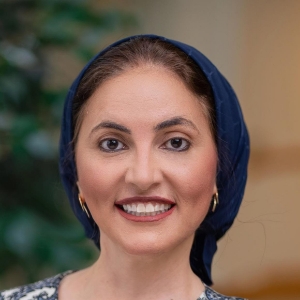
The Importance of Outside Class Activities and Culture Immersion for Language Learners Acquisition
Amany Elsaeid is currently working at Colgate University as a Senior Lecturer of Arabic Language in the Program of Middle East and Islamic Studies. She worked, and still working, at the AUC- Carrier Development department as a trainer for teachers of Arabic language as a foreign language. She also worked at the American University in Cairo as a Professor of Arabic language for the graduate students at the TV and Digital Journalism Program. In addition, she is working.
In addition to her job as an instructor, she worked at Al-Azhar Arabic language center as a director of training and education and as a co-coordinator assistant.
Amany has two Master degrees, one in Arabic linguistics from Cairo University and the other in teaching Arabic as a foreign language from the AUC. Currently, she is applying for the PHD from Ain shams University in Arabic linguistics as well.
As an applied experience, Amany has 23 years of experience in teaching Arabic, 19 of them in teaching Arabic as a foreign language. She worked in many reputable institutions and programs such as Cairo University, the American University in Cairo, Critical Language scholarship (CLS) program, Notting Hill College, and Middle burry college at the USA for 4 years continually.
Learning a foreign language is not just about attending classes, memorizing vocabulary lists, or\and mastering grammar rules. It involves understanding the culture behind the language. To truly become proficient in a language, students need to immerse themselves in the culture and engage in outside class activities. Culture immersion is a key component of language acquisition, as it allows students to gain a deeper understanding of the customs, traditions, and values that shape the language they are learning. By developing cultural competence, empathy, and open-mindedness through exposure to different cultures, students can become more effective communicators and well-rounded individuals. Outside class activities can be a fun way for students to stay motivated and engaged with the language. Learning a new language can be challenging at times, but by participating in cultural events or connecting with native speakers, students can see the practical applications of their hard work and feel more invested in their progress. By exposing themselves to authentic language use, practicing their skills in a low-pressure environment, and staying motivated through cultural immersion, students can make significant strides towards fluency.
For language learners Acquisition. It also gives a practical experience about Colgate University three weeks extended study to Morocco (Summer 2018). The summer extended study taught Arabic language and exposed students to Arabic/Moroccan culture by combining learning and excursions’ topics. This extended study course offered an excellent opportunity for students who were interested in learning Arabic while immersing themselves in Moroccan culture. By combining language instruction with cultural immersion activities, this course provided a unique and effective way for students to learn the language and gain a deeper understanding of Moroccan culture. The course was designed to provide students with an immersive experience in Moroccan culture while also teaching them the Arabic language. It was divided into two parts: language instruction and cultural immersion.

The Challenges of Teaching Arabic as a Foreign Language in the UAE (K-12 )
Arabic Adjunct Lecturer, Curriculum Developer, Calligrapher, Author, and Researcher.
This research paper aims to shed light on Teaching & Learning Arabic challenges in UAE schools (K-12).
From a teacher'steacher's perspective, the challenges of teaching Arabic include curriculum, assessments, and inclusion.
The Arabic curriculum is essential in UAE schools as it is a mandatory subject for all non-Arabs in all UAE schools, whether public or private. Ministry of Education (MOE) has a series, "Arabic Brings Us Together," introducing Modern Standard Arabic to young learners. However, this book has more than 12 parts for the different stages, and it follows the language standards; teachers still need to work on aligning the book with the student's needs, assessments, and effective teaching.
Assessments are an important part of the educational process for schools, teachers, and parents. The challenge is whether these assessments, considering oral proficiency, reflect learning and meet the language standards (CEFR & ACTFL).
Inclusion and diversity are elements of any learning environment and seem trendy in many organizations. Still, when discussing schools, we deal with sensitive situations where students need intervention, support, resources, and special assessments that meet their learning disabilities, which all fall as a burden to the teacher.
This paper presents a snapshot of the challenges of teaching and learning Arabic while trying to suggest solutions and fill the gap in this field.

Perceptions of translanguaging and social identity of heritage learners in an Arabic classroom
I am a PhD candidate in Second Language Studies (SLS) at Michigan State University. My research focuses on Arabic heritage language learners and their classroom practices. I am also interested in L2 vocabulary acquisition and translingual practices of L2 learners.
Within the past few decades, notable contributions have been made in heritage language education research that continued to gain ground in language pedagogy and teaching practices (e.g., Dávila, 2017; Valdés, 2000; Fishman, 2001; Kelleher, 2010; Polinsky & Kagan 2007). This study is guided by translanguaging and social identity, two theories that were previously investigated in connection with Heritage Language Learners (HLLs) in general, and Arabic HLLs in particular. This study investigates the effects of both translanguaging practices and social identity on the experience of Arabic HLLs in the classroom.
Following a mixed-method design, quantitative data are retrieved from two 9-point-Likert-scales questionnaires that target Arabic HLLs self-categorization as in-group or out-group members of their heritage communities, and HLLs’ perceptions and attitudes towards translanguaging. Qualitative data are triangulated from semi-structured interviews, classroom ethnographic observations, and class notes. Data from 75 Arabic HLLs who took the questionnaires and twenty learners who participated in the interviews are analyzed.
Quantitatively, results of a hierarchical cluster analysis categorize HLLs into three main clusters based on their questionnaire responses. Qualitatively, a thematic analysis method is adopted in analyzing the interviews, classroom observation, and class notes.
Results show general positive attitudes towards translanguaging practices in the classroom. Also, Arabic HLLs tend to align themselves with their heritage communities in terms of social identity. However, there appears to be mixed views on language mixing as a social phenomenon and translanguaging practices in the classroom or during studying. Participants see language mixing outside the classroom as an obstacle to melting into their heritage communities. However, they believe that using their entire linguistic repertoire in class helps them communicate better and move forward in their Arabic learning journey. Finally, results indicate that Arabic HLLs use translanguaging practices to mobilize their social identity in class. Pedagogical implications and future directions are discussed.

Translanguaging in the classroom: Material development for intercultural communicton
My name is Dalal Abo El Seoud. I earned my Master’s degree in Teaching Arabic as a Foreign Language in 1994 from the American University in Cairo (AUC). My thesis was entitled “Collocations and Vocabulary Teaching”. I earned my Ph.D. from Ain Shams University in 2003 from the Department of Curricula and Methods of Teaching, where my dissertation was entitled” The Effect of an Integrated Approach on Developing the Oral Skills of Learners of Arabic as a Foreign Language”. I have been teaching at AUC since 1997, in The Department of Arabic Language Instruction. I started teaching Arabic as a foreign language in 1986, first as a part-time instructor in CACE, then as a full-time instructor in 1997 in the Arabic Language Institute. In 2013, I was elected by ALI faculty to be the chair of the department, now called, Arabic Language Instruction, and then reelected for another three years. I teach in my department as well as in the TAFL MA program. My research interests focus on teaching methodology and thinking skills. I am a co-author of a series of three-level Arabic writing textbooks called ‘uktub al ‘arabiyya, and the “Arabic- English Lexicon of Verbs in Context”. I have also published a number of articles focusing on teaching Arabic as a foreign language, entitled “Integrating Reading and Writing: Literature Circles”, in “Handbook for Teaching Arabic Language Professionals in the 21st Century” 2nd edition, “Teaching and Learning Arabic Grammar in the Classroom: A Holistic Approach” in “Teaching and Learning Arabic Grammar: Theory, Practice and Research” and “Digital Storytelling: A Learning-Oriented Assessment Activity” in a book under publication called “Challenges in Teaching Arabic as a Foreign Language” Edited by myself. I also authored a book of Food expressions in colloquial Egyptian Arabic called “Fish, Milk, Tamarind”. This book received three international awards.
One of the cutting-edge pedagogies for teaching language in the twenty-first century is "translanguaging." It describes how bilingual or multilingual people use various languages in a fluid and dynamic way. It goes beyond the idea of language separation and acknowledges that for students to communicate and express themselves successfully, they should employ their language repertoire of their linguistic resources. Translanguaging is a potent pedagogy for learning a second language, according to research reports. According to Gracia (2009), this method, which accesses the same context through many languages, is a helpful one that fosters a greater comprehension of the subject matter. She continues by stating that it is a daily social practise used to make sense of the world. By using this pedagogy, students can better express their ideas and choose situation-appropriate strategies to accomplish their communication objectives. According to Baker (2011), translanguaging gives students cognitive advantages since it allows them to read in one language, talk about it in another, before writing about it. This ensures that the subject matter is processed and assimilated. Treatment (2018) adds that students draw from their own L1 repertoire to expand their linguistic repertoire of their L2. Additionally, via translanguaging, students also incorporate their own cultural perspectives, increasing intercultural competency understanding (Azzaz et al., 2021). In response to Parra's assertion that "we still know little about the design of translanguaged instruction" (2021, p. 767), this presentation will address such concerns. I will demonstrate how I created and carried out translanguaging activities in an L2 Arabic classroom using English, which is the students' most often used language, as well as trans dialectical activities utilizing modern standard Arabic and Egyptian colloquial Arabic. In doing so, I will attempt answering the following questions:
1- What material was developed to implement translanguaging?
2- How did translanguaging develop intercultural communication?
3- To what extent is translanguaging beneficial to different levels?

Reflections of a Sociolinguistics class of diverse Arab identities
PhD Arabic language and linguistics. Professor of Arabic, Department of Arabic and Translation Studies, American University of Sharjah (retired).
A report on the outcomes of a class of Arabic sociolinguistics conducted at a university in the United Arab Emirates at which English is the primary language of instruction. Class participants represented a cross section of Arab nationalities: Algerian, Egyptian, Emirati, Jordanian, Kuwaiti, Lebanese, Libyan, Palestinian, Somali, Sudani, and Syrian. The subjects that most animated students were codeswitching, upon which most students conducted their final research projects, and the language(s) of social media. Students recognized their own behavior and practice in the concepts as they are expressed in the literature, and their observations from their biweekly research projects corroborate those. The subject over which students were most conflicted was that of language planning and policy, especially regarding the teaching of Arabic literacy from K through university. While students recognize that facility in English is essential, they also express anxiety about English supplanting Arabic and the apparent decline in facility with fuṣḥā among their generation. There was no consensus as to how to remedy the situation. Especially controversial was the question of the language of instruction in early childhood education and the appropriate language for children’s books. Details of those three issues will be elaborated and discussed.
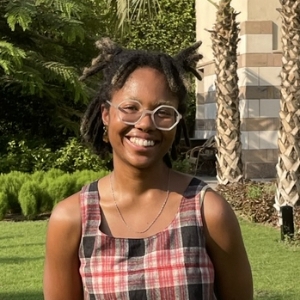
The native language in the room: the academic benefits and pedagogical curiosities of creating a GCSE Arabic curriculum for Arabic-speaking heritage students in the UK
Elete Nelson-Fearon is an educator, writer and linguist from London. After graduating with a first-class degree in Arabic and Spanish from the University of Manchester, Elete completed a Postgraduate Diploma in Education, researching language learner identity and the implications of a lack of access to Arabic education. Elete has spent time as a Spanish teacher in London secondary schools, and is an alumna of the CASA@AUC Advanced Arabic Fellowship. Elete currently works as an editor and a translator between Arabic, Spanish and English.
It is often assumed that it is in UK heritage students’ best interest to focus on their progress in English-language education. However, neglecting their native language can in fact be detrimental to their academic profile and ability to present themselves as polyglots in professional settings. This paper looks at how this issue manifests for Arabic-speaking heritage students in the UK and how to address it, by exemplifying an intervention at a secondary school in Feltham. This intervention gauged students’ proficiency in Modern Standard Arabic (MSA), their professional aspirations and what an Arabic-language curriculum could look like at this school and beyond. The scope of this study is widened through addressing the English Baccalaureate (EBacc), the UK government’s classification of a set of GCSE subjects that, if attained, indicates a student’s wide-ranging knowledge and affords them more professional and academic prospects. One element of the EBacc is a Modern Foreign Language (MFL), with the most commonly taught languages being Spanish and French, but heritage students are frequently withdrawn from these classes in order to provide extra support with core subjects. Gaining a GCSE in Arabic would close this gap in their EBacc and afford them the ability to work and study in either an English- or Arabic-language context, which proficiency in an Arabic dialect alone may not allow as easily. This study recommends that Arabic education in secondary schools begins early on so as to shape students’ perception of the language as one they can gain a qualification in and use professionally, that community-centered solutions are used to work around the lack of Arabic language school teachers in the UK, and to further research the pedagogical uniqueness of having a knowledge base of an Arabic dialect by gathering data on students’ foundations and use of Arabic outside of school.

Who framed the Arabic Language. Language ideologies and proficiency frameworks in TAFL
Federico Salvaggio holds a PhD in Arabic Linguistics from the University of Genoa (IT) and is currently a Researcher in Arabic Linguistics at the University of Udine (IT) where he teaches Arabic Language and Culture. He is also a Lecturer in Arabic Language and Translation at the University of Trieste (IT) and has previously taught Arabic Language and Translation at various universities in Italy, Libya and Egypt. His research interests focus on Arabic language pedagogy, Arabic contact linguistics, Multilingualism in the Arab and Islamic world, Arabic as a heritage language, and on the ideological and symbolic dimensions related to linguistic knowledge and its transmission within the Arab and Islamic world.
In the last decades a heated debate has arisen in TAFL about the suitability of Western proficiency frameworks (such as CERF or ACTFL guidelines) for the teaching of Arabic as a foreign language. While everybody seems to agree on the fact that the way in which Arabic has been traditionally taught (namely the fuṣḥā-based grammar-translation method) is not consistent with contemporary Western frameworks, the proposals to overcome this intrinsic incompatibility diverge.
For some it is TAFL that should be rethought in order to adjust to CEFR/ACTFL standards, whereas for others it should be the other way around: CEFR/ACTFL principles should conform to the peculiarities that distinguish the Arabic language from other commonly taught languages.
One might wonder if in this latter case one can still speak of TAFL in its literal and technical sense, i.e. teaching Arabic as a foreign language, since such idiosyncrasies of the Arabic language (or so supposed) seem to set it apart from other foreign languages. Should we then rather speak of teaching Arabic as a unique language? Should one consequently develop a framework specifically designed only for Arabic? Or should one move one step forward and propose an Arab framework, based on alternative principles, that will rival Western frameworks and could perhaps be applied also to other languages that claim the ‘same uniqueness’ as Arabic?
In order to assess their implications for the attempts of standardisation of current TAFL practices, the proposed contribution will explore the contrasting language ideologies and visions of language endorsed by Western modern language pedagogy, for which Arabic is just a language among others, and by the Arab/Islamic tradition linguistic thought that would hardly agree with the idea that Arabic is a language like any other and that, in its more audacious speculations, would even posit that no language is ever just a language.
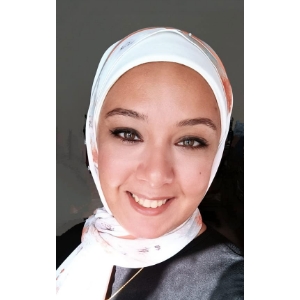
Problem-based learning: Developing students’ language proficiency and 21st-century skills through a transformative learning experience in AFL classrooms.
I have been actively involved in the field of Teaching Arabic as a Foreign Language for over a decade as a researcher, curriculum developer, and teacher. I obtained two master's degrees from AUC: one in Teaching Arabic as a Foreign Language, acquired in 2018, and another focusing on Comparative Education which I earned recently in 2023. Throughout my teaching career, I have worked with students from different academic levels and ages ranging from higher education to K12, which helps expand my teaching and research experience. I have presented at some conferences before. My research interests are primarily centered around instructional approaches for teaching Arabic as a foreign language, assessment techniques promoting higher-order skills, and exploring avenues incorporating technology into Arabic language teaching.
Problem-based learning provides an authentic learning experience that engages students in real-world problem-solving related to Arabic language acquisition. By starting with relevant problems, AFL students are encouraged to actively participate and engage in meaningful interactions using the Arabic language. Furthermore, this approach enables learners to think critically when analyzing information, researching, and finding solutions to these problems. AFL students develop their reading, writing, and speaking skills through problem-based learning by engaging and analyzing various texts within contextually rich scenarios. This study presents an actual classroom experience that fosters students' communicative abilities in Arabic and promotes their skills relevant to the 21st-century context, including learning, literacy, and life skills. The curriculum design incorporates authentic social and environmental issues to enhance students' language proficiency while raising their consciousness about global concerns and SDGs using the target language skills. Moreover, this approach seeks to transform students' perceptions and behaviors by equipping them with knowledge through problem-solving activities conducted in Arabic. The students' final product demonstrates their proficiency in effectively communicating their findings through the target language while producing digital audiovisual media. The data obtained from the students indicate that AFL learners derived significant advantages from engaging in Problem-Based Learning. This pedagogical approach facilitated the expansion of their global awareness and critical skills and fostered the development of their literacy skills. Additionally, PBL had a positive impact on enhancing their language proficiency. These outcomes underscore the efficacy of employing PBL methodology in an AFL classroom.
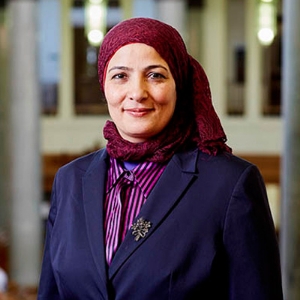
Using Arabic/English corpus-based tools in teaching, learning and assessing Arabic language and translation
Dr Hanem El-Farahaty is an Associate Professor of Arabic Language, Translation and Interpreting at the University of Leeds, UK where she also received her PhD. She is a Senior Fellow of the UK Higher Education Academy, a Fellow of the Chartered Institute of Linguist and The Michael Beverley Innovation Fellow (2021-2022). She has extensive experience teaching translation; interpreting; Arabic as a foreign language; Arabic media; Arabic culture; and comparative linguistics. El-Farahaty is the author of Arabic-English-Arabic Legal Translation (2015) published with Routledge and the co-editor of the Routledge Handbook of Arabic Translation. Her book on legal translation was translated into Arabic and published by King Abdulaziz University. She is a reviewer for various international publishers: Routledge, Cambridge University Press and Edinburgh University Press.
Arabic corpora have existed since the last two decades of the past century. Although there is more Arabic corpus-based research available in the form of research papers and conference proceedings, most of the freely available Arabic corpora are web-generated. Likewise, parallel corpora, specialised corpora are rare in spite of the growing need to use them in empirical linguistic investigations of authentic Arabic texts and for language and translation teaching. This presentation/workshop aims to showcase the use of Arabic monolingual, parallel corpora, term bases and web interfaces in: (i) pedagogical approaches to language and translation teaching and (ii) interdisciplinary socio-cultural investigations. The list of corpora used include: (1) The Leeds Arabic Corpora; (2) The Leeds Monolingual and Parallel corpora of Arabic and English countries’ constitutions; (3) Arabic Web 2012 (arTenTen12, Stanford tagger); (4) The United Nations Parallel corpora and (5) The United Nations Terminology Datebase.
In this presentation/workshop, I will demonstrate how the University of Leeds Monolingual and parallel corpora have been compiled and stored on on Sketch Engine https://www.sketchengine.co.uk/. I will also showcase the use of corpus-based tools and blended learning techniques, in teaching language, advanced media Arabic and legal translation using the above list of Arabic and English corpora. Thus, this presentation/workshop will be of great value to language and translation tutors, language and translation researchers as well as translation professionals.

Terms of Address between Couples in Egyptian TV Series: A Sociolinguistic Study on Gender Style and Performance
Hasnaa Essam Farag is a doctoral researcher at the University of Bayreuth, Germany. She obtained her MA from the Department of Applied Linguistics at the American University in Cairo (2018). Her bachelor's degree is in English Language, Literature, and Simultaneous Translation (2010). She has expertise in teaching Arabic as a foreign language since 2010 and obtained various positions in that field, including education vice manager, developer, trainer, and senior instructor. Her research interests include Arabic sociolinguistics, sociopragmatics, discourse analysis, and gender styles.
As part of ongoing Ph.D. qualitative research on style and gender in Egyptian TV series (2020-2021), this paper explores gendered characters' use of address terms in various contexts through the lens of four Egyptian authors. Within this context, a purposive sample of 75 interactions of six couples extracted from 30 episodes of three well-known Egyptian TV series is analyzed linguistically in relation to social variables and context. The study approaches the scripted data as a corpus of performed language demonstrating perceptions of gender style of address terms, which may reflect broader societal perceptions and can influence language production. It aims to reveal the construction of gender social identity in interactions through address terms and their linguistic creativity with respect to lexical meanings and social functions. The theoretical framework is based on previous approaches, including Difference (Tannen 1990), Similarity (Sadiqi 2003), Style (Labov 1973, Coupland 2007), Performance (Schilling-Estes 1998), and earlier literature on the categorization and functions of address terms (Brown and Gilman 1960, Parkinson 1985, Etawye 2017, Al-Balqaʼ 2021, etc.) Address terms in Egyptian Arabic are challenging as their form meanings differ from their social functions (Parkinson 1985). Accordingly, they function as an essential topic of teaching and learning Arabic. Non-native speakers should choose them carefully and accurately according to their social meanings in Egyptian culture. The study reveals that terms of address are influenced by gender and function as a social indicator for class and age. Furthermore, couples prefer to use specific categories of address terms that are found to fulfill various social functions in interactions. The study fills existing gaps in explaining the societal aspects of how address terms work in performed interactions for better communication and understanding of language production.

تعليم الصحافة والإعلام للأطفال الناطقين بغير العربية
محاضرة في الجامعة الأردنية
تشهد وسائل الصحافة والإعلام تطورا متسارعا في عصرنا الحالي، إذ لم تعد تقتصر على التلفاز والراديو والصحف والمجلات فقط، وإنما تجاوزته إلى الرسائل النصية ومقاطع الفيديو والوسائط الاجتماعية، وغيرها مما يتجدد وينتشر كل لحظة، ويؤثر في الطفل من عدة جوانب، لذا أصبح تعليم الصحافة والإعلام ضرورة؛ لتمكينهم من فهم الأخبار والمعلومات التي يتعاملون معها يوميًا، وتعزيز تفاعلهم الفعال مع الوسائط الإعلامية، ورغم أهميتها لا نجد استثمارا لها في صفوف تعليم العربية للأطفال الناطقين بغيرها، بل إنها مغيبة تماما عن الأساتذة ومؤلفي المناهج ومنسقي البرامج.
لذا سعى هذا البحث تسليط الضوء على أهمية تعليم الصحافة والإعلام، إذ سنستعرض الأسباب التي تجعل هذا التعليم ضروريًا للأطفال الناطقين بغير العربية، بما في ذلك تعزيز الثقافة الإعلامية وتنمية التفكير النقدي وتعزيز التواصل والتعبير، وسنناقش أبرز التحديات التي تواجه تعليم الصحافة والإعلام للأطفال الناطقين بغير العربية بما في ذلك التحديات المحتملة في تعليم الأطفال الذين يعيشون في بيئات غير عربية، مثل صعوبة فهم اللغة والتحدث بشكل طبيعي والتأثير المحتمل للثقافة المحيطة بهم، وسنتطرق إلى أبرز الاستراتيجيات التعليمية الفعالة التي يمكن استخدامها في تعليم الصحافة والإعلام للأطفال الناطقين بغير العربية، وفي الختام سنعرض نموذجا تطبيقيا نبين فيه كيفية تعليم الصحافة والإعلام للأطفال الناطقين بغير العربية.
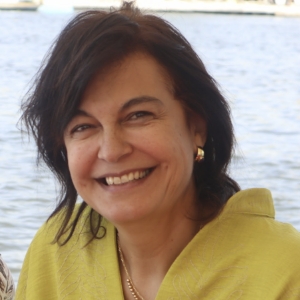
E-portfolios as a Means of Assessment
Senior Arabic Language Instructor at the department of Arabic Language Instruction at AUC.
This presentation aims at sharing the researcher’s experience of using e-Portfolios as an assessment tool to follow up on the students’ learning experience and performance throughout the semester. It also aims at highlighting the importance of students' self-reflection in the process of language learning. The presentation begins with introducing Cairo, the City of the 1001 Faces course, which focuses on learning about the depiction of the city and on using the language in reflecting and the computer skills in creating the e-portfolio. The presentation explains the students’ role in creating the e-portfolio process The students showcase and reflect on their progress in the language skills and in critical reading, speaking and gaining a cultural experience about Cairo. According to the research, re-visiting what the students covered and what they produced in the class throughout the semester is a means for reflecting on the progress and the achievement. And choosing the work they want to showcase is a means to promote independent learning, self-expression and self-confidence. Students are encouraged to go back to the class learning outcomes in the process of choosing the wok. In their reflection they express how they met the learning outcome.
The research verified that e-portfolio boosted active engagement as it gave students control over how their e-portfolios were structured, what materials they chose, and how they were presented (Heshmat Ghahderijani et al., 2021; Yastibas, 2015).
Students expressed how useful the experience of pausing, revisiting and going over what they covered (throughout the semester) to select from and going over their production as a proof of achieving the LOC’s. Students mentioned that they grasped more details from the texts than they did when we had it as an assignment, which coincided with one of the class learning outcomes.
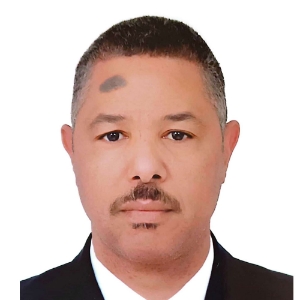
The Challenges of Using ChatGPT to Generate Reading Materials for Teaching Arabic as a Foreign Language
Housni Bennis is a Senior Lecturer in Arabic Studies at Washington University in St. Louis. He holds an M.A. from the same institution where he has taught Arabic at all levels as well as content course on Arabic literature and culture. He is interested in the pedagogical aspects of learning and teaching Arabic as a foreign language, especially the potential and challenges of integrating Artificial Intelligence in creating teaching materials and classroom instruction.
In recent years, there has been growing interest in the use of artificial intelligence (AI) and natural language processing (NLP) technologies for language learning and teaching. ChatGPT, an advanced language model, has emerged as a promising tool for generating texts. This paper investigates the challenges associated with utilizing ChatGPT specifically for generating reading materials for teaching Arabic as a foreign language.
The study explores the potential of ChatGPT to generate authentic and contextually appropriate reading materials that cater to the needs of learners at specific proficiency levels. Additionally, it examines the limitations of ChatGPT's ability to produce accurate and idiomatic Arabic text and to generate culturally relevant and appropriate content, which is crucial in foreign language instruction.
The study also delves into the difficulty of maintaining consistency and coherence in generated texts, and the potential for errors and inaccuracies in grammar, vocabulary, and stylistic conventions. It investigates how ChatGPT's outputs might require extensive post-editing and revision to meet the linguistic and pedagogical standards of Arabic teaching materials.
Besides, the paper provides insights into potential solutions and strategies to overcome these challenges, including the integration of human expertise in curating and refining the generated materials, the use of fine-tuning techniques to enhance language model performance, and the importance of iterative feedback loops involving teachers and learners to improve the efficacy of the generated resources.
This research hopes to contribute to the emerging field of AI-assisted language teaching by providing valuable insights into the practical implications of employing ChatGPT for generating reading materials in Arabic as a foreign language instruction. It underscores the importance of recognizing and addressing the inherent challenges and limitations of AI technologies to maximize their benefits in language education contexts.
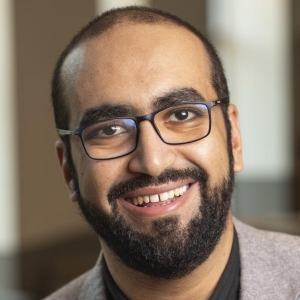
Using Artificial Intelligence Applications in Arabic Classrooms
Dr. Islam Karkour earned his Ph.D. in Education, Curriculum, and Instruction, with concentrations in Second Language Acquisition and Intercultural Competence, from the University of New Hampshire. He previously obtained his MA in Educational Technology and TESOL from Manchester University, UK, where he was a Ford Foundation Fellow, as well as his BA in Education from Al-Azhar University in Cairo, Egypt.
Dr. Karkour has extensive experience in the field of foreign language education. He began his career as an EFL teacher in Egypt in 2005. In 2013, he was selected as a Fulbright Foreign Language Teaching Assistant and placed at UNH. Dr. Karkour has worked as a lecturer of Arabic at both UNH and the Middlebury Summer Intensive Program. He is an ACTFL certified Oral Proficiency Interview (OPI) tester, as well as an ACTFL certified Assessment of Performance toward Proficiency in Languages (AAPPL) rater. He is also a licensed Intercultural Development Inventory (IDI) qualified administrator.
Dr. Karkour’s research interests include intercultural competence, foreign language education, and curriculum design and development. He has published several articles related to his work on foreign language education and curriculum design. Currently, he is working on projects that explore the relationship between intercultural competence and foreign language education, stemming from his doctoral dissertation on these subjects.
Artificial Intelligence (IA) applications, such as ChatGPT and Bard, are set to radically change various fields and industries, and education is no exception. However, this new technology poses a significant challenge to some schools in the US, to the extent that it has been banned in some school districts, such as the New York City Public Schools (NYCPS) and the Los Angeles Unified School District. Despite this, banning the use of AI may not be the answer in higher education settings. Instead, utilizing it wisely and incorporating it into the curriculum may be the solution. This utilization entails upskilling teachers and curriculum developers to be competent in using AI along with extensive efforts and agility to create new practices using AI.
In this presentation, we will showcase the latest applications of AI, including ChatGPT, Bard, Perplexity, and Pi Chat, among others. Furthermore, we will delve into the challenges that these applications pose to higher education. Finally, we will discuss potential strategies for integrating AI into Arabic language classrooms. We will share how we have used artificial intelligence, such as ChatGPT and Bard, in our classes. We will showcase ways to help students build and activate new vocabulary, practice writing, and reading comprehension, and utilize AI apps as conversation partners. In addition, we will demonstrate Arabic language development as a result of AI integration.
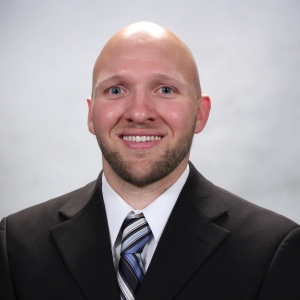
Arabic Visual Word Recognition in Beginner L2 Learners
PhD Candidate in Applied Arabic Linguistics at the University of Michigan
Visual word recognition plays a critical role in reading development. Recognizing a word is the result of two simultaneous and competing routes: phonological and lexical. A word is recognized phonologically when the letters are sounded out until the whole word is recognized. More advanced learners will also recognize words via the lexical route, using word shapes, patterns, and morphemes to facilitate the recognition process.
Arabic presents a unique perspective of visual word recognition due to the nonconcatenative morphology of Arabic root and word patterns. Numerous studies have highlighted the robust role of the Arabic root in word recognition; however, research has not looked at visual word recognition with beginner L2 Arabic learners. The current study looks at this learner group, and it also divides the group into beginner learners not growing up in Arabic-speaking households (BG) and those who grew up and verbally communicate with their families in Arabic (HS).
The study consists of a written word recognition task and vocabulary check. Words presented in the recognition task are either real words appearing in the first-year Arabic textbook or pseudowords varying in root familiarity and morphological complexity. The results reveal that 1) the BG group displayed a correlation between vocabulary knowledge and faster word recognition speed for both real and pseudowords; 2) higher performing BG learners demonstrated response time and accuracy patterns which reflect a transition to a lexical route of word recognition 3) higher performing HS learners had slower response times for real and pseudowords than their BG counterparts, and their temporal patterns indicate a reliance on a phonological route to recognize words. The presentation will discuss beginner learner sensitivity to root letters, how metalinguistic awareness and implicit language intuition affect word recognition in both groups, and the pedagogical implications for classrooms consisting of both BG and HS learners.

The new Challenges of ChatGPT in Teaching Arabic literature and Writing for Heritage Students and Non-native Speakers: A case study- Al Akhawayn university
Jaouad ELBAKILI
The release of advanced technologies such as ChatGPT has caused concern among language educators regarding its potential impact on writing skills. This paper explores the extent to which artificial intelligence (AI) may undermine efforts to teach Non-native speakers how to write in Arabic, particularly in relation to the teaching of Literature, Academic Writing, and vocabularies. The paper argues that students' unprincipled use of AI may hinder their learning and negatively impact their evaluation. This is because it may prevent the main learning tool of self-monitored and focused practice and undermine the evaluation process. as students may receive inflated scores for work that has been heavily influenced or even generated by AI.
The paper will discuss that it is important for educators to strike a balance between the use of AI and traditional teaching methods to ensure the development of effective writing skills. as well Reconsider the criteria for evaluating the level of the students
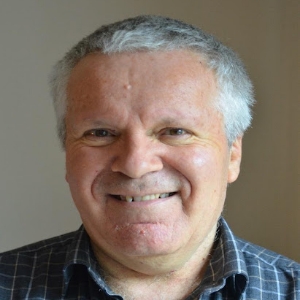
Integrating Language Variation into the Intermediate Level Reading Lesson using the Communicative Approach
Jonathan Featherstone is working currently as Co-ordinator of Modern Foreign Languages at the University of Glasgow. Jonathan is also Honorary Fellow at the University of Edinburgh where he continues to teach Arabic. As well as teaching Arabic in Edinburgh since 2007, Jonathan has previously taught Arabic at the Foreign and Commonwealth Office, the Defence School of Languages and has over 30 years of Arabic teaching experience. He is also a teacher-trainer and has delivered several workshops in Communicative Foreign Teaching in the UK, UAE, and USA.
Jonathan is also the author of a number of Arabic coursebooks, including BBC Talk Arabic, and is co-author of Arabiyyat al-Naas fi Masr Book 1 (Routledge) and more recently Arabiyyat al-Naas Book 2 (Routledge) which came out in October 2022. He is now currently working on Book 3.
Jonathan has a particular passion for the teaching of Arabic dialects, in particular Egyptian, Levant and Maghrebi Arabic, and is a great believer in the Integrated Approach in terms of Arabic teaching pedagogy.
This paper aims to offer strategies that teachers of Arabic can use to help handle Arabic language variation in their intermediate level reading classes communicatively.
Most language courses and course-books at intermediate level are theme based, and each module often revolves around a core text or texts which present the key vocabulary and structures presented in that module. Core texts, which can be found in all mainstream Arabic textbooks, such as al-Kitab, Arabiyyat al-Naas, which are inevitably in Modern Standard Arabic.
Whilst being able to read and understand a basic MSA text is essential for intermediate learners, the ability to speak in a natural manner is equally important, and also fulfills criteria laid down by the CEFR (Common European Framework Reference) This paper will look at the challenges teachers face when trying to include aspects of language variation into their MSA reading classes and offer solutions.
Ensuring that students can effortlessly move smoothly from reading an MSA text and to speaking about it naturally, involves careful thought and preparation by the teacher. Which Spoken Arabic structures does the learner require to talk about the text he or she has read in MSA? Does any additional vocabulary need to be provided? How aware does the teacher need to be of syntactical, morphological and lexical variation between a written MSA text and an informal discussion about the text?
This paper will try to answer the above questions, and at the same time offer support to teachers in preparing their reading classes to ensure that they are both communicative, but also help their learners handle Arabic language variation in a natural way. This will be done by presenting teachers with a selection of communicative exercises, which they can evaluate and reflect upon in terms of how well they achieve natural communication in their reading classes.

Teaching and Learning Arabic as a Foreign Language in Malta: A Case for Maltese Speakers as Heritage Learners
Dr. Kurstin Gatt is a resident academic within the Department of Middle Eastern and Asian Languages and Cultures in the Faculty of Arts at the University of Malta. In 2019, he completed his doctoral dissertation in Arabic studies at the Freie Universität Berlin in Germany. Currently, the scholar coordinates the undergraduate and postgraduate programmes of Arabic studies and teaches modern standard Arabic, Arabic dialects, and Arabic literature. For the past years, Dr. Gatt has been involved in several local examination boards. His research interests include Arabic as a Foreign Language, Discourse Analysis, and Arabic-Maltese linguistic links.
Malta, the smallest member state of the European Union, offers a particular linguistic case study for heritage and non-heritage language learners. Owing to its historical link to the Arab world and the long-standing economic and political ties with North Africa, Malta has benefitted from mixed heritage to the extent that some people consider it Arabic or assume it has a large Arabic community. This paper argues that the case of teaching Arabic as a heritage language requires a unique approach due to the particular linguistic situation on the Maltese islands. The Maltese language, which is the only European language of Arabic origin and considered as an Arabic dialect by the International Association of Arabic Dialectology (AIDA), raises intriguing issues regarding our discussion about Arabic as a heritage language. The overall objective of this paper is to survey the teaching and learning of Arabic as a foreign language in the twenty-first century in Maltese educational institutions by focusing mainly, but not exclusively, on secondary and post-secondary education. More specifically, this paper intends to shed light on three main aspects: first, to examine the challenges of teaching culturally diverse Arabic classes; second, to investigate linguistic (such as code-switching, linguistic false friends, and grammatical interferences between L1 and L2) and cultural challenges (such as cultural differences, stereotypes, biases), which heritage and non-heritage learners face when studying Arabic in Malta), and third, to analyse potential similarities and differences between heritage learners and Maltese learners of Arabic and whether this could be developed into a pedagogical approach or materials for teachers that could benefit both learners of Arabic as a heritage language and Maltese learners.

Attention to Verbal Morphology in L2 Arabic Reading: An Eye-Movement Study
Lama Nassif, Williams College
Elizabeth Huntley, Michigan State University
Ayman Mohamed. Michigan State University
In second Language (L2) acquisition research, attention is believed to facilitate learning. Godfroid and Uggen (2013) found that attention to irregular verb morphology motivated learning of novel L2 German forms. The current study explored the generalizability of these findings to geminate and sound verbs in Arabic, and also raised the question: How do learners’ self-reported subjective experiences align with the online and offline measures of awareness and learning? Eleven fourth-semester learners of Arabic participated in the experiment. Participants completed a language learning background survey, took a fill-in-the blank pretest, read 20 sentence pairs while an Eyelink 1000 recorded their eye movements, and answered true/false comprehension questions that appeared on-screen following each sentence. A posttest, identical to the pretest, and a prior vocabulary knowledge scale task were then conducted. Learners’ reflections were recorded in a subsequent recall task and a follow-up semi-structured interview. Descriptive analyses of the eye-tracking metrics reveal generally equivalent reading times between verb types, although participants made more direct visual comparisons between geminate- than between sound-verb conjugations. Participants did not report awareness of geminate verbs, but noticed other aspects of input (e.g., verbs, word roots), and, on average, improved their written productive knowledge by 2% after only one exposure. Alongside quantitative findings, the presentation will largely focus on qualitative data revealing participants’ noticing patterns during reading. Pedagogical implications are discussed in terms of input enhancement in a communicative L2 Arabic classroom.
Key words: Attention in L2 learning, acquisition of L2 verbal morphology, L2 reading, L2 Arabic learning

Approach to integrate Virtual Exchange pedagogy in Arabic language classes: Case studies delivered through COIL and GSACS programs at The City University of New York, CUNY
Lamees is a Lecturer in Arabic at the MESAS department, Columbia University. Also, she teaches Arabic language and literature at The City University of New York, CUNY. She received her M.A degree in Comparative Literature from Cairo University. Lamees is the coordinator of the Middle Eastern Studies Minor at John Jay College, CUNY. She is the Arabic language editor of Otherness, the online students' magazine of the Education and Language Acquisition Department at LaGuardia Community College, CUNY. She implemented multiple virtual exchange projects with partners in the Middle East, such as The American University in Cairo and MSA University. Lamees's virtual exchange project with The University of Oklahoma was published by IGI Global Book ""Developments in Virtual Learning Environments and the global workplace."" She supports COIL professional development at LaGuardia CC and across CUNY. In addition, she is a member and co-translator of the Future Language Educators Recruitment Project FLERP, logistically supported by The American Council on The Teaching of Foreign Languages ACTFL. She taught at several institutions in the U.S, such as Brooklyn College and Temple University. She received a grant from The Association For the Study of the Middle East and Africa ASMEA to promote her project of translating May Ziadah's Poetry into English. She presented at several conferences such as ACTFL, NECTFL, ASMEA, NYSED/NYSDOE World Languages Conference,
Lamees is a Lecturer in Arabic at the MESAS department, at Columbia University. Also, she teaches Arabic language and literature at The City University of New York, CUNY. She received her M.A degree in Comparative Literature from Cairo University. Lamees is the coordinator of the Middle Eastern Studies Minor at John Jay College, CUNY. She is the Arabic language editor of Otherness, the online students' magazine of the Education and Language Acquisition Department at LaGuardia Community College, CUNY. She implemented multiple virtual exchange projects with partners in the Middle East, such as The American University in Cairo and MSA University. Lamees's virtual exchange project with The University of Oklahoma was published by IGI Global Book ""Developments in Virtual Learning Environments and the global workplace."" She supports COIL professional development at LaGuardia CC and across CUNY. In addition, she is a member and co-translator of the Future Language Educators Recruitment Project FLERP, logistically supported by The American Council on The Teaching of Foreign Languages ACTFL. She taught at several institutions in the U.S, such as Brooklyn College and Temple University. She received a grant from The Association For the Study of the Middle East and Africa ASMEA to promote her project of translating May Ziadah's Poetry into English. She presented at several conferences such as ACTFL, NECTFL, ASMEA, NYSED/NYSDOE World Languages Conference. Currently, Lamees is a board member at New York Arabic Teachers Conference NYATC which is supported by Qatar Foundation.
Virtual Exchange VE commonly known also by Collaborative Online International Learning (COIL) is a global learning initiative supported by the Division of Academic Affairs and the Center for Teaching and Learning. It is a teaching method that facilitates students’ global awareness and cross-cultural communication through interactive online practices. This paper suggests strategies to integrate linguistic and cultural knowledge in higher education classrooms through Virtual Exchange pedagogy.
The paper highlights include an explanation of several VE projects and their learning objectives. The projects mainly designed to build solid employability skills as suggested by National Association of Colleges and Employers NACE and Global Competencies as well. The research offers a valuable insight to educators working on second language acquisition, social justice, or cultural anthropology, focusing on the Arabic language and culture to teach through VE pedagogy.
At CUNY some VE projects delivered through Global Scholars Achieving Career Success (GSACS), supported by the Stevens Initiative, which is sponsored by the U.S. Department of State, with funding provided by the U.S. Government, and is administered by the Aspen Institute. The Stevens Initiative is also supported by the Bezos Family Foundation and the governments of Morocco and the United Arab Emirates. GSACS is a collaborative multi-campus program that foregrounds UN Sustainable Development Goals (UN SDGs) and career readiness competencies in class-to-class virtual exchanges between students from five colleges at the City University of New York (CUNY) and four universities in the Middle East and North Africa (MENA).
Faculty facilitators from CUNY and MENA institutions work in bi-national teams to develop and implement discipline-specific or interdisciplinary virtual exchange modules for their students in credit-bearing courses. GSACS modules enable students to investigate the world through the lens of a UN Sustainable Development Goal (SDG) while engaging in collaborative experiential learning assignments.
This paper discusses practical applications of VE interdisciplinary projects that conducted collaboratively with the American University, The Suez University and a domestic project that was done in collaboration with The University of Oklahoma. The paper includes some suggestions to design effective VE module plans to enrich students knowledge ahoy the Arabic language and culture, compare and contrast some controversial issues in the US and the Middle East and to enhance students ability to have a better understanding of the concept of othering and appreciate and accept people who are different in race, language and religion.
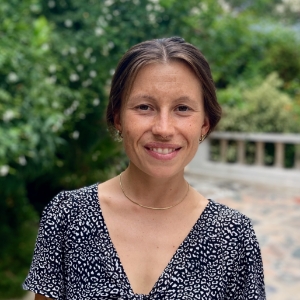
Using Playaling.com to Develop Autonomous Learning Skills
Lena Krause was an Arabic and French instructor at Beacon Academy, a Montessori high school in the Chicago area, from 2016-2022 where she founded the Arabic program. In 2023, she joined the Centre d’Etudes Maghrébines à Tunis (CEMAT) as Resident Fellow where she manages the Maghrib in Past & Present | Podcast and development of an online resource portal for researchers focused on North Africa. Her focuses include Maghrebi dialects and Arabic language pedagogy, with specific interest in the teaching of colloquial Arabic. She holds a Master of Arts in Teaching from North Park University and BA in Theater from Northwestern University. As a Fulbright US Student Researcher in Morocco in 2015-16, she explored oral traditions primarily among women. She was the first Moroccan Darija translator and contributor to Playaling.com.
This panel discusses how targeted use of an online learning tool can foster autonomous learning skills. It brings together perspectives from the platform’s developer with an Arabic educator who has used the website for project-based learning.
Message to the organizers:
Lena Krause will be attending in person and Jordan Gerstler-Holton will be remote. We would greatly appreciate the opportunity to present in this hybrid format in the spirit of using technology for learning and encouraging collaboration between educators in different regions. I submitted another application for a paper entitled “A Montessori Approach to Teaching Arabic at the High School Level” but prefer to present in this hybrid panel if possible. In that case, I withdraw my individual application.
Using Playaling.com to Develop Autonomous Learning Skills
This presentation shares practical applications of Playaling in a Montessori high school Arabic program. The program offered levels 1-4 and an integrated curriculum including MSA and freedom to explore other dialects. The Montessori method places high value on student choice and project-based learning.
Within this context, the presentation will discuss how Playaling was used to develop listening and reading comprehension skills. The search filter allowed selection of level-appropriate, authentic content that complemented thematic units (ex: food and family, work and leisure). By engaging with targeted videos, students applied old vocabulary in new contexts and different dialects. Playaling proved most successful in a flipped classroom format. Students were assigned to watch videos and complete activities at home, work at their own pace, and revise their work (repeating activities) until they achieved a certain result. Class time was used to answer questions and focus on production (speaking and writing).
Playaling additionally supported the curriculum’s emphasis on metacognitive awareness and autonomous learning. Through long-term projects, students chose videos according to their personal interests and taught them to their peers. Thus, students learned to set goals, navigate authentic texts, work according to their learning style, and reflect on their progress. Deep engagement with a single text aligned with the Montessori method of learning through investigation.
This presentation discusses both theory and practice of employing online tools to foster self-directed, project-based learning. More broadly, it calls into question the goals of K-12 Arabic programs at the current juncture. Which skills are most essential in 2023 in terms of language acquisition? What is the value of student choice and autonomy? And how can programs be innovative in teaching the great variety of linguistic features and cultures within the Arabic-speaking world?

The Lexical Approach in Action with International Commercial Terms. Lexicon, chunks, and collocations for raising awareness and skills
Letizia is Arabic Adjunct lecturer at The University in Siena, Italy. She holds a PhD dual degree from Sapienza di Roma and University of Cadix. Her first research interest is the teaching of Arabic and spoken varieties. She has also carried out two post-doc researches on contemporary literature, with specific focus on identity and representation.
Considering that lexical chunks have impact on developing fluency, this research encourages the adoption of a lexical approach in teaching for accelerating language development and raising awareness about the role of chunks in Arabic. The selected field is here international commerce, which involves several actors: the seller, the buyer, and the carrier all committed to the delivery of goods. Many procedure are necessary, first of all the writing of the forwarding contract for specifying under what conditions the items are transferred from the origin to the destination. Second, the responsibilities for loss or damages are usually well set, with legal and linguistic detailed descriptions. More, transferring goods implies: the release of a shipping mandate, packaging requirements, transportation costs, custom clearance procedures, freight conditions, port operations (if by sea), loading-stowage-unstowage-unloading. Parallel to the operations summarized above, other assessments are carried out before and after freight: the calculation of possible incomes and expenses, profits and loss, the fees amortisation, the prices of the different insurances needed, the potential of wholesale or retail commerce once goods are delivered. Although previous studies on both collocations and collocations in Arabic already exist, this paper addresses more specifically the fields of international commercial terms. The glossary here presented results from personal experience as free-lance practitioner, and from a post translation linguistic analysis which revealed that: 1-Arabic words are not combined as strictly as in English (cp .: by open, restricted, or bound); 2-the original nature (lexical or grammatical) of the source language collocations is subject to change in the target language.

The increase of the( š) (shin) in the structures of Arabic verbs, a comparative point of view
I worked at the Department of Arabic Language and Literature sense 2003 after obtaining a Ph.D. in Linguistics with distinction from Yarmouk University, until he obtained the rank of professor in 2018 Published 22-refereed scientific research in scientific journals in Arabic and English in Jordan, Syria, Egypt, Morocco, Algeria, Canada, Australia and Malaysia, Participated in scientific research in 45 scientific conferences inside and outside Jordan: America, Britain, Tunisia, Algeria, Egypt, Syria, Lebanon, Yemen, Qatar and the United Arab Emirate. Published two scientific refereed books funded by the Deanship of Scientific Research at Yarmouk University and the Deanship of Scientific Research at Al al-Bayt University. I have a published novel and a collection of short stories.
تبحث هذه الورقة في زيادة صوت الشين في أبنية عدد من الأفعال العربية ومواطن زيادتها ، (شفعل ،وفعشل وفشعل وفعلش ) وعلاقتها بصيغ أخرى من مثل (أفعل وهفعل وسفعل )وفق منهجية مقارنة تبحث في ورود هذه الصيغ في اللغات السامية.وفي سبيل ذلك تقف على أنظار النحاة العرب القدماء في ما يزاد على صيغ الأفعال،وموقفهم من (حروف ) الزيادة ومواطنها، ثم تنظر في ورود أمثلة الظاهرة ومدى تحققها في نماذج وشواهد حقيقية من الشعر الجاهلي ومرحلة ما دعي بعصر جمع اللغة والاحتجاج، لتقف على تاريخية تلك الأمثلة وأصالتها ، وتفحص مقولات الصرفيين العرب القدماء في عد تلك الأمثلة من الرباعي المجرد أو الملحق به . ولا تغفل النظر في ما يشيع من تلك الأمثلة في عربية اليوم ، فصيحها وعميتها . كلمات مفتاحية : شفعل ، حروف الزيادة ، صرف مقارن.
This paper examines the increase in the sound of (š) in the structures of a number of Arabic verbs and the places of its increase, (šafʕala, fašʕala, falʕaša) and its relationship to other forms such as (hafʕala ,safʕala, ʔafʕala ) according to a comparative methodology that examines presence of these forms in Semitic languages. For this, the study examines the attention of the ancient Arab grammarians in what is added to the forms of verbs, and their position on the (letters) of the addition and its places. Then looks at the occurrence of the examples of the phenomenon and the extent to which they were achieved in real examples and evidence from Pre-Islamic Poetry and the stage of what was called the era of Linguistic material collection and linguistics inferences, to examines the history and authenticity of those examples, and examine the sayings of the ancient Arab morphologists to judge those examples from the abstract quatrain or appended to it. Do not neglect to look at what is common among these examples in today's Arabic, both fluent and blind. Keywords: šafʕala, extra letters, comparative morphology.
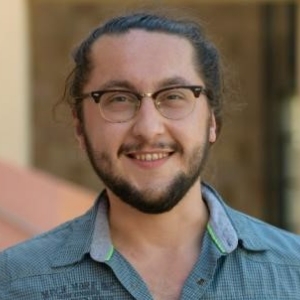
Segmental Correlates of L2 Arabic Speech Comprehensibility and Accentedness: L1 Consonant Age of Acquisition as a Predictor
Fresh TAFL graduate from Hungary. My research interests lie in Arabic second language acquisition and pronunciation.
L2 pronunciation studies have found that the intelligibility (i.e., listeners’ actual understanding) of L2 speech is most closely related to comprehensibility (i.e., listeners' ease of understanding) rather than to overall foreign-accentedness, a relationship that has been replicated in Arabic as a foreign language. The pronunciation errors that predict loss of comprehensibility can be explained by phoneme Functional Load (FL): high FL phonemes lead to a greater loss of speech comprehensibility compared to low FL ones (e.g., p-b in English has a high FL: mispronouncing "park" as "bark" potentially confuses the listener more than mispronouncing "think" as "sink", as the th-s pair has low FL). However, calculating the FL of phonemes relies on the existence of large spoken corpora, which are not available in the case of underresearched languages, such as Arabic. On the other hand, FL correlates with consonant age of acquisition (CAoA) in native-speaking children across several languages: the higher the FL value of the consonant, the earlier children acquire it in their native languages. This suggests a potential proxy variable that could be used to indirectly make assumptions about FL values. Therefore, an empirical speech perception study is conducted to investigate native Arabic listeners’ perception of L2 Arabic speech, by exploring whether CAoA predicts the relative strength of the effects of consonantal pronunciation errors on comprehensibility and accentedness. Findings will potentially help inform Arabic L2 pronunciation teaching, by establishing a hierarchy of importance between different pronunciation errors that could be used for setting instructional priorities.
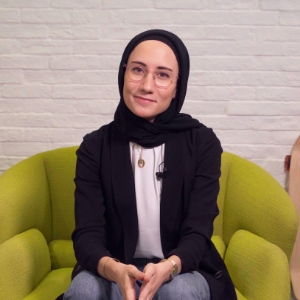
The influence of bolded keywords in digital news texts on reading speed and comprehension for Heritage+ Learners of Arabic
Marwah is currently the Communications Manager, Digital Platforms & Content Specialist at Google in the Middle East and North Africa, with a mission to help inform and educate individuals and businesses (SMBs) about digital opportunities, programs and tools available to help them grow their skills and develop their businesses. She recently launched Google’s official blog in Arabic and manages a series of videos called ‘Googleyat’ which aims to educate Arabic speakers on the latest in technology.
Since joining Google, she has led the launches of Google Digital Skills program - “Maharat min Google”, Internet Safety Platform - “Abtal Al Internet” along with others, working with content creators, publishers, governments and large and small businesses across industries in the MENA region.
She speaks fluent English and Arabic, and has been leading the language quality for the external Arabic content for Google in the region. Marwah even led talks at Google and in external events like at RiseUp event in Cairo about the importance of the Arabic language. She also led the diversity and inclusion initiatives at Google in Europe, Middle East and Africa, by offering training sessions and opening dialogues on topics related to diversity.
Marwah is also actively involved in the latest in Artificial Intelligence. She conducted a lecture at the American University in Dubai to showcase the main concepts in AI and Machine Learning, and how that is linked to the media landscape.
Marwah holds a Bachelor’s Degree from the American University in Sharjah, with a GPA of 3.46 [Graduated with honours, Cum Laude]. She is currently completing her Masters of Arts in Teaching Arabic as a Foreign Language at the American University in Cairo, Egypt. She is finalising her dissertation which looks into ways to enhance the reading experience in Arabic amongst Gen Z. Her current GPA is 3.96 and is expected to complete her MA certificate in June, 2023.
Marwah was also ranked the top student [highest ranked] in Sharjah amongst her peers, when graduating from high school in 2011. She was also ranked the 7th top student in the UAE and was honoured by His Highness Sheikh Mohammed bin Rashid Al Maktoum.
Marwah was born in the UAE and has completed her education in the country.
Learners and readers of Arabic, especially Heritage Language Learners, suffer more than ever from the lack of focus while reading online texts. This becomes a challenge that negatively impacts their overall learning process. This paper explores the influence of one salience feature - bolded keywords - over reading speed and comprehension amongst Heritage+ Learners of Arabic. Heritage+ refers to Arabs living in the Arab world, with minimum exposure to the language. Thirty-two students, who are Heritage+ Learners of Arabic, currently studying at the American University in Cairo and belong to Generation Z (18-25 years), participated in this study. Each participant had read two articles; one text with bolded keywords and the other one without, followed by two multiple choice questions per article, and two open-ended questions. The study used a quantitative method to assess the reading speed and comprehension, and a qualitative method to analyze the individual preferences. Based on the non-parametric tests conducted to analyze the abnormally distributed data, there is no significant difference between the two text formats on reading speed and comprehension. However, it is clear that students prefer the bolding feature as the study shows (78% prefer this feature). Additionally, the qualitative data gathered from students indicate that bolding has a positive effect on comprehension as well as on focus and engagement with text. Based on the study findings, bolding keywords can be amplified in pedagogical practices in language teaching classrooms to help maintain engagement with learning materials. Future research is recommended to assess this feature amongst other groups including foreign learners and Arabic native speakers.
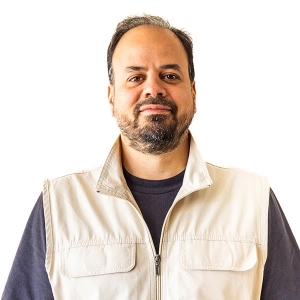
How does Scince help in developing Heritage Language?
I have taught Arabic at Cairo American College since 2008, and I have served as the Head of the Department since 2019. I hold a BA from Ain Shams University and an MA from American Internation College. I was part of the team that wrote AERO 2018 World Language Standards, and also the standards that were developed for Queen Rania Academy. My favorite part of that profession is seeing the students develop cognitively, socially, and emotionally.
CAC offers two types of tracks for its students:
In the session, a CAC representative will introduce the Arabic program (curriculum, assessment, vision, progression, etc)
Arabic World Language (AWL)
Overview (Developing communicational and intercultural competencies):
Where would they apply their learning?
At school, home, stores, restaurants, streets, transportation, online, or any other public places outside of the school walls.
Topics: These levels are designed to equip/help students communicate fluently on certain topics such as meeting people, using courtesy words and expressions, introducing oneself/others, family, feelings, small talk, daily routine, purchasing, places, functional Arabic (prices/dates/age/time/size/quantity), school life, hobbies, simple directions, storytelling, sports, food, colors, etc.
Arabic Language Arts (ALA)
Overview (developing literacy skills):
The Arabic class prepares students to interact with different texts in different genres. The main goal is to develop their literacy and communication skills. Reading comes before writing; students need to be good readers before being good writers. Providing students with the right resources to encourage pleasure reading is a way of developing reading skills. Developing reading fluency and stamina will enrich their language acquisition (vocabulary, writing, grammar, creativity, etc).
Engagements can be through:
It's also fundamental for defining identity and maintaining connections.
How will students show learning?
Learning will be reflected in the four domains (Listening, speaking, reading, and writing).
They will be able to function in real-life situations (filling out applications, writing different types of messages, reading, storytelling, and conversations).
Units:
Listening and Speaking in different modes (conversations, storytelling, giving directions, presenting).
Homework:
Focus on reading from different genres independently, and can be extended to interviews and research.
Home-School partnership:
Here are some actions that make the children know the value of Arabic:
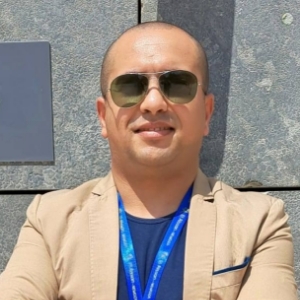
وثيقة معايير مقترحة لتدريس اللغة العربية بالمدارس الدولية
- معلم لغة عربية للناطقين بغيرها بالمدارس الدولية وعبر الإنترنت - باحث في مناهج وطرق تدريس اللغة العربية
- محاضر ومدرب تكنولوجيا التعليم (حوالي ١٠٠ ساعة تدريبية)
- معد ومطور محتوى تعليمي لبعض الأكاديميات والمؤسسات التعليمية"
تهدف هذه الورقة البحثية إلى التعرف على محتوى بعض الوثائق والأطر المعيارية العربية والعاليمة لتدريس اللغات الأجنبية، وتدريس اللغة العربية للناطقين بغيرها، والقاء الضوء على بعض النماذج التطبيقية ومحاولة الاستفادة من ذلك في تأسيس وثيقة معايير مرجعية لتدريس اللغة العربية بالمدارس الدولية بمصر.
وقد سار البحث وفق الخطوات الآتية:
This paper aims to identify the content of some Arabic and global normative documents and frameworks for teaching foreign languages and teaching Arabic to non-native speakers, shedding light on applied models and trying to benefit from that in establishing a document of reference standards for teaching Arabic in international schools in Egypt.
The research proceeded according to the following steps:
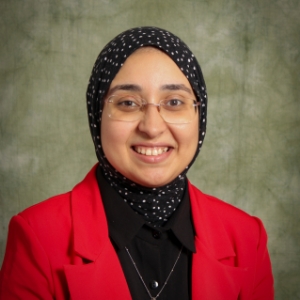
Teaching Arabic Grammar Inductively using Picture Storybooks
Mona is an MA TAFL graduate from AUC and an Arabic lecturer at the State University of New York at Binghamton.
Picture storybooks (children stories) are considered an effective way of improving foreign language learners language proficiency particularly with regards to the development of vocabulary and reading comprehension. In addition to that, picture storybooks can also be an effective way of introducing grammar. The aim of this paper is to familiarize instructors with ways of using picture storybooks in the Arabic as a foreign language classroom to teach grammar inductively. The paper will show methods, steps, and examples of utilizing picture storybooks in introducing grammar to Arabic as a foreign language adult learners inductively. Additionally, the paper will examine students’ perceptions toward learning Arabic grammar inductively through picture storybooks. Students will be given a questionnaire to rate their experience and were allowed to comment on their overall experience after introducing grammar inductively through picture storybooks. It’s hypothesized that students will find the experiment motivating and effective to the development of their Arabic grammar acquisition.
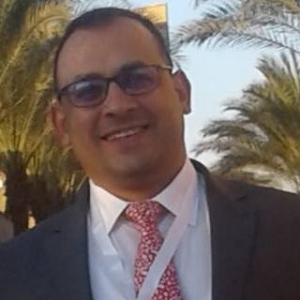
Challenges that Face Teaching and Learning Arabic in International Schools in Egypt
Mostafa Younes
Master’s in Teaching Arabic As A Foreign Language- AUC
Ph.D. researcher in Applied Linguistics- Tanta University. Egypt.
The Arabic language is characterized by its diaglosic situation; where Arab children acquire the language at the colloquial variety or the dialect spontaneously at home, while the Modern Standard “Fusha” is acquired through learning at school, which is a challenge in itself, taking into consideration the lack of exposure to Standard Arabic in the media, and the lack of usage or showing support of Fusha officially in many cases. As for the study of Standard Arabic in schools, there are major challenges related to Arabic language curricula, teaching methods, assessment, and the lack of student motivation. Students of international schools increasingly feel these challenges more than students in public schools who study all subjects in the Arabic language.
This research discusses the challenges facing teaching Arabic in international schools in Egypt from the point of view of teachers and students. In order to reach an understanding of the nature of these challenges, and in the hope of finding solutions to them. The research is based on a questionnaire that is given to a number of teachers and students in some large international schools in Cairo, and the research will shed light on the teachers’ vision of what should be improved in the curricula, the work environment, and the training that teachers should receive to help them perform their work with excellence, and achieve better results.
The importance of this research paper comes from the low level of proficiency in Modern Standard Arabic, speaking and writing, among a number of international school students. which points to a need for more research studies that address the recent challenges in Arabic language teaching and Learning, and come with enlightened suggestions.
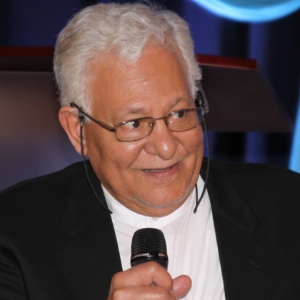
Teaching and Learning Arabic K/16: The Challenge of Changing Direction Brazil Experience of Training Arabic Language Teachers
Muhammad S. Eissa is Independent Scholar and former President of EISSA & ASSOCIATES, Inc. (E&A) from 2002-2022. E&A is specialized consulting firm in Educational Consulting and services in the areas of Arabic/Islamic studies, pedagogy of second/foreign language teaching/learning with focus on Arabic. Dr. Eissa also is an associate member of the Center for Middle Eastern Studies, University of Chicago and Research Affiliate at Colgate University, New York. He serves as a TeamLeader/Site Visitor in STARTALK program with which he has been associated since its inception 2007.
Dr. Eissa is extending his educational and academic professional expertise to the public audience through his academic leadership of Al-Azhar Islamic Foundation in Illinois (AIF) where he is the Chair of Board of Trustees. The vision of AIF is to bridge the gap between academia and the learned community through specifically designed educational programs on Islamic studies.
Between 1967 and 2014, Dr. Eissa has been engaged in teaching and research in the areas of Arabic language, literature, culture and Islamic studies at distinguished academic institutions (U of Chicago, U of Michigan, Northwestern University, UCLA, American University in Cairo and others). He has been actively engaged in innovative projects that aimed at promoting Arabic and Islamic studies with special interests in research and teachers’ professional development in the areas of applied methods/approaches to modern pedagogy and technology in foreign/second language teaching and learning.
As an independent scholar, Dr. Eissa continues his contribution to the field and maintains his engagement in several academic activities including research in contemporary and classical Arabic literature, translation and editing of modern and classical texts of academic content. He has contributed to the field through publications of various formats and presentations in specialized conference panels and other relevant professional forums.
Dr. Eissa has received his basic elementary, secondary, undergraduate and graduate education at Al-Azhar Institutes and Al-Azhar University in Cairo, ending with Ph. D. degree (1978). In the USA, he conducted post graduate studies at University of California Los Angeles (UCLA) culminated by receiving the C. Phil degree (1984). He has acquired knowledge of special interest in numerous courses in the areas of second language acquisition; applied linguistics; curriculum & material design; bilingual translation and editing; and application of technology in language instruction and research.
This presentation aims to share the experience of setting the foundation of implementing teaching Arabic as a world language in Brazil. It was a response to an initiative from QFI which entrusted to our team and funded it. The initiative started in Sao Paulo but soon it was moved to Rio de Janeiro where it sprung. For the purpose of this presentation, the focus will mainly be on the Rio de Janeiro phase where modern approaches to Arabic teaching/learning are expected to sprout. In this presentation I/we will discuss the main steps taken to establish this program: teachers’ recruitment, teachers’ training, and material development.
The first teachers with whom the initiative started were recruited from among applicants who studied Arabic in college for purposes other than teaching. Few of them have traveled to an Arabic speaking country for other than further learning the language and its culture. The leaning process of those teachers, while varied situationally, was mainly in the traditional grammar-translation manner with the fox on reading and writing skills. Few of the non-native speakers of Arabic applicants were able to communicate orally but this skill was developed outside learning classes.
Training teachers was done with two approaches: 1) by modeling teaching a foreign language using the communicative approach in the same manner we want the teachers to emulate when teaching Arabic; 2) by the trainers’ participation as co-teachers in live classrooms. This enabled the trainers to understand the challenges, modeling how to deliver instruction, and apply the theoretical methodology in the trainees’ actual classrooms. In-person training was complemented by online weekly meetings with the teachers who reported their teaching activities and challenges they had, and trainers provided comments and feedback.
Along with training the teachers, materials were developed, and activities were created to suit levels of proficiency and cultural appropriation. All were according to a curriculum framework that was designed with the teaching objectives and ACTFL guidelines in mind.
A trip to Egypt was planned to expose the teachers to the Arabic language/culture in the authentic milieu. A special two-week program of training was developed to meet these goals.

Making-meaning of multimodal texts: The case of infographics
University of Pittsburgh
Pittsburgh, US
With the rise of technology, communication evolved from the use of language as the only form of communication to combining multimodal signs (such as colors, shapes, sounds, and images) with language, making what is known as a multimodal text. This change was most obvious during the recent COVID- 19 pandemic where most of the governmental agencies in Arab countries similar to other countries deployed infographics (i.e., one type of multimodal texts) to communicate information to their public about the contagious virus. Therefore, “to which degree and how can we use multimodality to educate students for critical awareness and appreciation of key cultural and social issues, as well as for access to the specific skills needed to get by in the contemporary workplace and in society?” (van Leeuwen, 2015, p. 558). Informed by systemic functional linguistics (Bardi, 2008; Halliday & Matthiessesn, 2014) and van Leeuwen’s (2021) multimodal analysis of images, this presentation will provide guidance for the ways Arabic language teachers can explain how meanings are expressed in different semiotics. By giving examples from the analyses of the differences and similarities of infographics produced by the governmental health institutions in two languages: Arabic in Jordan and English in the US, the presenter will show how teachers can provide students with analytical tools to enable them to read and compare infographics critically. The compare and contrast approach will support raising students’ awareness of the meanings that the different semiotics express, developing students’ critical reading and cultural awareness, and developing students as critical global citizens. The presentation will end with a discussion of this approach on teaching, learning, and research.

The Challenges and Difficulties of Teaching Arabic as a Heritage Language for Students k-12
An Arabic instructor at the American University in Cairo, teaching Fosha, Levantine, and Egyptian dialects. developing and creating materials and curriculums. Graduated from Damascus University with, Arabic literature and education diploma, and received a master's degree in teaching Arabic as a foreign language from an American university in Cairo. worked with different schools like Shouifat international school, and interested in teaching Arabic as a heritage language for children.
Based on the growing number of the immigration of Arab families to the diaspora, and the propagation of the international schools in the Arab world, which created a new Arab heritage generation. Nowadays, it became a necessity to develop more research that focuses on these learners and supports teachers to achieve their goals of improving their students’ levels.
My previous research was titled “The Motivation and Attitude of Arab Heritage Children and their parents toward Learning Arabic as a heritage language in host countries “, and now I aim to continue my research to find more details that could help teachers and Arab heritage students in k-12 to learn Arabic easily and effectively.
Very few research focuses on Arab heritage learners, but there are rare studies that focus on students k-12, which encouraged me to search in this field.
This research aims to identify the challenges and difficulties that face teachers, who teach the Arabic language as a heritage language for students k-12 in the Arab and non-Arab world. The research uses mixed methods, qualitative and quantitative methods. The survey will distribute to teachers in different countries to recognize their methods of teaching and curriculums.
The survey was designed to identify the methods and curriculum that teachers use in their schools or centers, the different types of challenges that face the teachers, and their suggestions to overcome these challenges in the future. The questionnaire is divided into two different types of questions, closed-ended and open-ended questions.
At the AUC conference, I would like to present “The Challenges and Difficulties of Teaching Arabic as a Heritage Language for Students k-12”. And my presentation will be in the Arabic language.

The Tower of Babel Carnivalesque: Blurred Identity in Arabic Digital Discourse
Nagwa Younis is a Professor of Linguistics. She served as the Head of the Department of English, Faculty of Education, Ain Shams University. She has also been the director of Centre for Developing English Language Teaching (CDELT) at Ain Shams University for ten years, during which she organized a number of international conferences and events. She was an adjunct professor in many academic institutions, among which is Birmingham University, UK. She is a reviewer of several international journals in Linguistics. She is a member of the promotion committee in a number of universities in the Arab world. Her publications include "Arabic Corpus Linguistics" with Tony McEnery and Andrew Hardie. Currently, she is the Program Coordinator of the MA in TEFL at Arab Open University
This paper explores the concept of blurred identity in Arabic digital discourse, focusing specifically on the Tower of Babel carnivalesque. The Tower of Babel is a metaphor for the linguistic and cultural diversity of the world, and the carnivalesque is a literary and cultural mode that subverts established norms and hierarchies. Together, they provide a lens through which to view the complex and fluid linguistic nature of identity in the digital age. Through an analysis of Arabic digital discourse, including social media, blogs, and online forums, this paper argues that the Tower of Babel carnivalesque creates a space for the negotiation and performance of identity that is linguistically both liberating and disorienting. In this space, identities are constantly shifting and merging, creating a sense of hybridity and fluidity that challenges traditional notions of identity and belonging. In the Bakhtinian sense, digital platforms exhibit precisely this mix of people participating in an online community, relatively free of “officialdom”—across social strata where the borders between actors and spectators are blurred and where praise and abuse operate side by side—that posting, sharing, and commenting in any linguistic form permits. Language in general and the Arabic language in particular can easily be jeopardized on all linguistic levels that may result in a state of unintelligibility among Arab speakers, both orthographically and lexico-grammatically. Concepts such as “Who is a native speaker of Arabic?” and “which Arabic?” are touched upon with a view to suggest policy and planning strategies for the standardization of Arabic in the digital age.
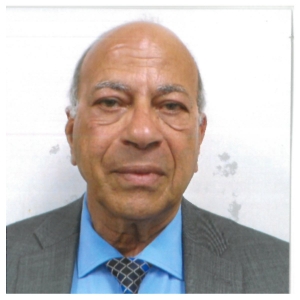
A Glimpse at Two Major Challenges in Modern Standard Arabic (MSA) Learning: ‘Sandhi-variation’ vs. ‘Agglutinative Inflected Word’
Education
• Doctor of Education (Instructional Leadership): Argosy University, San Francisco Bay Ares, CA (2013).
• MA in Education: Chapman University, Monterey, CA (2009).
Position
Associate Professor of Modern Standard Arabic (MSA): The Defense Language Institute Foreign Language Center (DLIFLC – since May 2006). Monterey, CA – USA.
Presentations in International Conferences
• Arabic Language and Linguistics: Heritage and Innovation @ The American University in Cairo (AUC), Egypt. (15 -17 Dec 2019)
• 44th International Academic Conference (Vienna, Austria 1- 4 October 2018)
• Arabic Foreign Language Pedagogy: Current and Innovative Techniques @ the American Association of Teachers of Arabic (AATA). Boston, MA. (17 - 19 November 2016)
• New Trends in Teaching Arabic as Second Language @ King Saud University, Riyadh, Saudi Arabia. (12 - 14 Feb. 2014).
Recent Publications
I. English Publications
• The role of discourse signaling cues in text processing: the modern standard Arabic (MSA) model https://www.researchgate.net/publication/347513458_Dr_Nasr_Abdrabo_Discourse_Signaling_Cues_in_Text_Processing_The_Role_of_Discourse_Signaling_Cues_in_Text_Processing_The_Modern_Standard_Arabic_MSA_Model
• Semantic encoding strategy training in FL acquisition: the modern standard Arabic (MSA) model. International Journal of Teaching and Education. Vol. VI,
No.2/2018 file://dliflc-fs.pom.dliflc.edu/home$/len/nasr.abdrabo/ProfileUnity/Downloads/48-1-6989%20(9).pdf
• Globalization of the Arabic alphabet: influences on contemporary European languages https://www.researchgate.net/publication/323251497_Globalization_of_the_Arabic_Alphabet_Influences_on_Contemporary_European_Languages
II. Arabic Publications
١. عالمية الأبجدية العربية وتأثيراتها الإيجابية على اللغات الأوروبية المعاصرة: منظومة الحروف العربية (ص: ٢٥١ – ٢٩٢). مركز الملك عبد الله بن عبد العزيز لخدمة اللغة العربية (مباحث لغوية ٣٤). المملكة العربية السعودية. الرياض (٢٠١٧).
٢. أسس تعليم اللغة العربية عن بُعْد بين النظرية والتطبيق: تعليم اللغة العربية عن بُعْد: الواقع والمأمول (ص: ٦٩ – ١٢٤). مركز الملك عبد الله بن عبد العزيز لخدمة اللغة العربية (مباحث لغوية ٦). المملكة العربية السعودية. الرياض (٢٠١٤).
Very respectfully,
Nasr Abdrabo, Ed.D.
Email: nasr.abdrabo@dliflc.edu
Mobile: + 831 747-5946
Linguists argue that Modern Standard Arabic (MSA) is one of the most challenging languages to learn as a second/foreign language. Linguists attribute the difficulty of Arabic acquisition to many reasons, perhaps on top of which, are linguistic and grammatical structures that may not exist in most other languages, especially languages derived from Latin. The controversial problem here is that a word can be understood in several different meanings according to its location or classification in a specific context.
This paper highlights two major challenges facing learners of MSA -- especially novice learners; namely ‘Sandhi-variation’ and ‘Agglutinative inflected word’ during listening and reading comprehension.
Three research questions generated the topic of this paper:
RQ1: What are the characteristics of the Arabic language and alphabet?
RQ2: What are the major challenges that MSA learners face during listening and reading comprehension?
RQ3: What technique can MSA learners adopt to manage the major learning challenges?
The author initiated the paper by introducing and defining the linguistic structure of the Arabic language, delving into the Arabic alphabet in terms of degrees of strength and weakness, phonetic outputs, classification, and the coalition and dissonance between Arabic letters and their impact on a word structure during listening and reading comprehension.
Then, he addressed the two major linguistic concerns/challenges facing learners in MSA learning:
The presenter will conclude by highlighting ‘linguistic and grammatical analysis’ as a technique that learners can adopt to gain more control over the abovementioned two major challenges.

Pragmatic Competence and the Authenticity of Arabic OPI Role-plays
Nesrine Basheer is an Assistant Professor of Teaching at the University of British Columbia and a Fellow of the Higher Education Academy. She holds a Ph.D. in Arabic applied linguistics from the University of Texas at Austin and an M.A. in applied linguistics from Teachers College, Columbia University. Her research interests include Arabic L1/L2 writing, the integrated approach, and language assessment. Dr. Basheer has consulted on several Arabic K to 12 projects including the ‘New South Wales Arabic curriculum’ in Australia and the ‘Assessment Framework for Languages Education’ project developed by the Sydney Institute for Community Languages Education.
Stephen O’Connell is a language learning and assessment specialist with more than 20 years of experience in the field. He has taught English as a Foreign Language in South Korea, English as a Second Language in the U.S., and English for Specific Purposes in Ireland. His language testing experience includes creating proficiency assessments for K-12 students in the U.S. with WIDA at the University of Wisconsin-Madison and with Harcourt Assessment. He also has worked on language tests for adults with CaMLA and the English Language Institute at the University of Michigan. He holds a Ph.D. in second language acquisition from the University of Maryland, College Park and an M.A. in applied linguistics from Teachers College, Columbia University. His research interests include the assessment of speaking and listening and the use of TBLT for language instruction.
Among the challenges of teaching and assessing Arabic as a second language (L2) is its diglossic nature. The shift towards communicative language teaching has inspired numerous Arabic programs to adopt the Integrated Approach with its different models. However, some standardized assessments, such as the ACTFL OPI, continue to use MSA to evaluate spoken Arabic despite the question of authenticity and the potential impact to construct validity. Part of the speaking construct is pragmatic competence (e.g., Fulcher, 2003; Taguchi & Roever, 2017), and part of pragmatic competence is knowing which dialect or register to use in which contexts. Due to diglossia, it is particularly pertinent for Arabic learners to gain this competence and to know which variety is context-appropriate according to findings from Arabic sociolinguistics research. This study examines the perceptions of linguistic laypeople in order to obtain additional evidence about the issue of the inauthenticity of using MSA for everyday spoken interactions. Fifty L1 speakers of Levantine Arabic who are not trained as Arabic educators or evaluators (i.e., linguistic laypeople) were asked to judge the authenticity of learner performance on the role-play segment of the ACTFL OPI. The participants evaluated the role-play responses produced by ten L2 Arabic learners (5 Intermediate and 5 Advanced). The learner responses varied in their uses of MSA and CA, including MSA-only, CA-only and MSA-CA mixtures. Participants' evaluations were analyzed quantitatively through regressions and ANOVA and the participants’ explanations for their evaluations were analyzed qualitatively using a grounded theory approach. The study’s findings will be discussed in terms of implications for how Arabic oral proficiency should be assessed and the potential washback effect on L2 Arabic K-16 classroom instruction.

Dialects, Diglossia, and Disdain: Teaching an Arabic Listening Course
Senior Associate Instructional Professor of Arabic
Director of the Arabic Program
Department of Near Eastern Languages and Civilizations
University of Chicago
(is this what you wanted? I'm also Egyptian, and a proud alumnus of AUC (major political science, minor anthropology)
Research shows that the average American spends about 45% of their language time listening and roughly 30% of the time speaking (the rest is spent reading and writing).
Yet even with this imbalance (and one can only imagine what the numbers are for the Arab world), most language classes focus on improving the ways people speak, not listen.
In this lecture, I will lead the audience through the rationale for and creation of a new Arabic listening course called “Arabic in Social Context” which was piloted in 2011 at the University of Chicago. It will focus on what teaching listening means in a diglossic, multi-dialectical language like Arabic. The lecture will share some of the materials, assignments, and assessments used, as well as student feedback.
Listening closely, if it is at all authentic, will lead one to places quite removed from the solidly fusHa pieces found in textbooks. In the world of spoken Arabic, it is only in very limited contexts, like news broadcasts, that fusHa is consistently adhered to. Therefore, I will share the themes that emerged organically from our authentic listening activities (the social messaging that is built into language choices; language disdain; switching between fuSHa and ‘ammiyyah; language and class; language and gender; youth language and the associated phenomenon of language during revolution).
Given that authentic listening involves dialects, and given that ‘ammiyyah is a multi-headed beast, the lecture will show how we can help to demystify for our students the four major Arabic dialects (Masri, Shaami, Khaliji, Maghribi) , helping them to begin to understand the recurring structures and morphemes of each dialect to distinguish them from each other and from fuSHa.
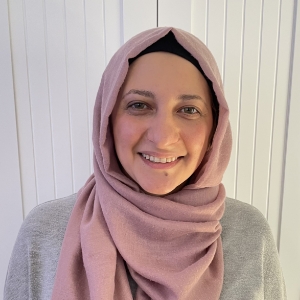
Re-Conceptualizing the Language-Reading Relationship: Insights from Arabic and Heritage Language Learners (HLLs)
Ph.D. Candidate in Second Language Acquisition, Department of Modern Languages, Carnegie Mellon University
The language-reading relationship, a widely accepted theoretical assumption, posits that oral language comprehension (OLC) is closely related to reading comprehension (RC; e.g., Gough & Tunmer, 1986; Scarborough, 2001). However, an extensive literature review revealed that this assumption does not fully apply to HL population (e.g., Xiao, 2006; Zhang, 2016), despite its validity for L1 and L2 learners across different orthographies and writing systems (e.g., Joshi, 2018; Quinn & Wagner, 2018). This discrepancy raises theoretical concerns and practical implications, particularly for understanding the factors influencing language and literacy development in understudied bilingual populations.
This study addresses the question: how should we re-conceptualize the language-reading relationship to be more inclusive of understudied populations? Using Arabic’s unique characteristics, the study formalizes two competing hypotheses to re-conceptualize the language-reading relationship.
The print skills hypothesis adopts a traditional conceptualization, which suggests that OLC does predict RC, but its influence is indirectly mediated by print skills. Leveraging Arabic's writing system’s phonological transparency and morphological opacity, this hypothesis emphasizes the impact of limited print exposure on the language-reading relationship. In contrast, the language skills hypothesis, challenges the traditional conceptualization by proposing that the relationship between OLC and RC fully diverges due to differences in how OLC develops among HLLs. By considering Arabic's diglossic nature and distinguishing various types of language proficiencies, this hypothesis highlights the significance of language experiences, including formal schooling and academic exposure, in shaping the language-reading relationship.
By drawing insights from Arabic, the findings of this study suggest that improving print experiences among HLLs may reinstate the language-reading relationship, according to the print skills hypothesis. However, the language skills hypothesis suggests that the contribution of OLC to RC is heavily impacted by the individual’s language experience. In this way, the language skills hypothesis becomes a more inclusive re-conceptualization of the language-reading relationship, contributing to our understanding of language and literacy development in understudied bilingual populations.

Understanding the Arabic Language Learners’ Use of Metacognitive Reading Strategies in Arabic Texts: A Comparative Study of Native, Non-native, and Heritage Learners of Arabic Language
Radwa Ahmed is a young researcher and a language instructor. Guided by her passion for the Arabic language, she started her career as a teacher of Arabic right after her graduation with honors in the faculty of Education, Department of Arabic Language and Islamic Studies at Helwan University in 2008. Two years later, she completed a diploma in Educational Administration and another diploma in Comparative Education from the same college. Later, she earned her master’s degree in TAFL from the Department of Applied Linguistics at the American University in Cairo. She has been awarded fellowships to pursue her graduate studies in language teaching in 2018. At the time being, she is a PhD candidate in the Department of Linguistics and Semitic and Oriental Studies at the Faculty of Dar El-Ulum, Cairo University. During the summer of 2021 and 2023, she worked as an AFL instructor in the Department of Arabic Language Instruction, the American University in Cairo. Considering that the Arabic language can provide a tool by which non-native speakers worldwide can gain true access to the Arab societies, history and culture, Radwa hopes to pursue her future research focusing on the Arabic language and the advancement of its teaching.
A Comparative Study of Native, Non-native, and Heritage Learners of Arabic Language
The current study attempts to investigate the Arabic language learners’ metacognitive awareness of reading strategy use in Arabic texts. The study targets three distinct populations of Arabic language learners: native, non-native, and heritage learners of Arabic language. In this context, the study explores whether the three populations of Arabic learners use the metacognitive reading strategies (MCRS) in reading comprehension tasks and, if so, how consistent this use is across the three populations of Arabic learners. Further examination of the influence of the application of MCRS when performing reading comprehension tasks on learners’ reading comprehension scores is pursued along with an exploration of the extent to which this influence is convergent across the three populations of Arabic learners. To this end, a placement test was conducted online, in the very beginning, to identify the learners’ level and recruit the appropriate subjects. All the participants took part in the current study were of the intermediate level. Non-native and heritage learners were at the university level while native learners were students at the preparatory/secondary stage in public and private schools in Egypt. The Metacognitive Reading Strategies Questionnaire (MRSQ) (Abu-Rabia, 2018) was utilized along with a reading comprehension test. The test was developed by the researcher to include two reading passages; one narrative and one informative. Each passage is followed by ten to twelve reading comprehension questions varied to include literal, inferential, vocabulary, critical analysis questions, etc. The questionnaire and the test were conducted online. Findings of this study expect to reveal emerging themes related to the use of MCRS and its impact on the reading comprehension sustainable development among different populations of Arabic learners. Based on the findings, some practical implications of MCRS use will be discussed.

Learning to Read in an “Estranged” Language: Arabic Diglossia, Child Literacy, and the Case for Mother Tongue-Based Education
Female- Egyptian/American - PhD Holder- Applied Economist- Child Literacy Scholar - Published Author in peer reviewed journal on the topic of Arabic Diglossia & Child education
Reading proficiency of Arab students is amongst the lowest globally. Research in applied linguistics confirms the pervasive impact of Arabic language diglossia—that is the linguistic distance between the language of education, Standard Arabic (StA), and the vernacular mother tongue, Spoken Arabic (SpA)—on the acquisition of various basic literacy skills. This multidisciplinary paper argues that the current approach to education in Arab countries is not working and proposes to refocus on Mother Tongue-Based education. In a novel analysis, the paper examines through the lens of diglossia StA vocabulary in various educational materials designed to teach initial literacy to young children, including the new kindergarten Arabic textbook by the Ministry of Education of Egypt. The analysis shows that more than half the vocabulary used to teach basic reading skills, such as phonics and decoding, is un- familiar to children, i.e., distant from their spoken language variety. A commonly proposed solution to the unfamiliarity of preschool-aged children with the language of literacy instruction is to expand their oral exposure to StA, through read-aloud and screen time, such that it is not a new language when they enter school. Drawing on findings from the fields of Arabic linguistics, Early Childhood Education, Mother Tongue-Based Education and children’s literature, this paper discusses problems with this approach and deems it unimplementable. Using new survey data, the paper confirms the poor culture of reading to children in StA. It further outlines research demonstrating the limited role of screen time in developing language. Recognizing that children enter school with limited to no knowledge of StA, the paper presents evidence-based arguments for why adopting Mother Tongue-Based education—where SpA is the language of literacy instruction during the initial years of schooling—is the better pedagogical approach to teaching literacy and should be a steppingstone to learning StA.
Keywords
Arabic Diglossia, Child Literacy, Reading Acquisition, Mother Tongue Education, Egyptian Arabic Textbook
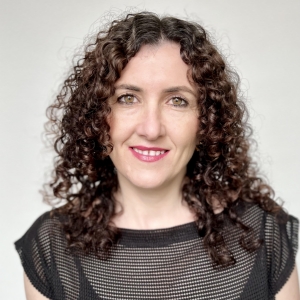
Teaching Arabic Through Art: Three Art Projects That Promote Language and Social Justice
With a bachelor’s degree in early childhood education and a master’s degree in special education, Rita Lahoud coordinates and instructs a unique interdisciplinary Middle Eastern and North African studies program geared toward young children that combines the Arabic language with the art and culture of the Arab World. She inspires her students to learn Arabic through lessons that infuse song, dance, and visual art.
In addition to her work at Public School 261, Miss Lahoud is the Co-Founder and Education Director of Go Project Hope, where she designs and implements education programs for refugees with the aim of improving lives and uplifting communities. Through this humanitarian work, Rita created a social justice program that provides opportunities for her students to connect with children living in refugee camps abroad through joint projects that promote global awareness.
Rita takes advantage of all opportunities that allow her to expand her knowledge. Over the years, she has participated in numerous education conferences, presented her work at the Metropolitan Museum of Art, and was featured in The Annenberg Teaching Arabic Video Collection. Mother to four teenagers, including a set of triplets, she is always ready to master new challenges. Rita has an abundance of ideas with all the energy and passion to see them through.
Teachers understand that culture is essential in the language classroom, yet they often need help incorporating it into their curriculum. Rather than search for ways to integrate culture into an existing language unit, teachers should flip the formula: lead with art and culture and allow language to follow. Exposing students to Arab culture by engaging them in hands-on art projects embedded in an Arabic language learning framework is the most effective way to teach students.
In this session, participants will learn how to design and implement an interdisciplinary project-based Arabic program that highlights social issues and promotes global awareness. Outlined are a primary-level language learning framework and three fascinating art projects that have been developed and improved over the last ten years and set the stage for primary-grade students to engage in art projects from Palestine, Yemen, and Egypt. These projects include a pop art project that focuses on how Oum Kulthum defied gender stereotypes to ultimately become the greatest singer of the Arab World, an embroidered tapestry project that shows how motifs and designs sewn on traditional garments link Palestinians to the land, and a three-dimensional architectural model of the Old City of Sana’a Yemen that showcases the rich history and beauty of an often forgotten country in turmoil.
Staying in the target language while teaching art can be a struggle, so participants will learn how to combine techniques like total physical response, regular use of visual aids, and a cool classroom store to create an authentic outlet for students to practice the Arabic language meaningfully. Participants will leave the session equipped to teach the Arabic language through these engaging art projects that highlight the nuanced culture of the Arab world while bringing attention to existing social justice issues in that region.
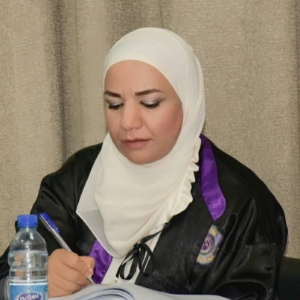
Teaching social language elements using short stories for non-native speakers, in secondary school students (Samples and applications)
Roba Al-Hayek, MA and PhD in Teaching Arabic to Non-Native Speakers ACTFL (Specialization: Sociolinguistics).
Higher Languages Institute - Damascus University.
15 years of experience in teaching Arabic for native and non-native speakers.
مقدِّمة: تُعَدُّ القصَّة القصيرة وسيلةً فعّالةً في تنمية المهارات اللُّغويَّة لدى متعلِّمي اللُّغات عموماً، وقد كانت إحدى أكثر طرق تعليم المفردات والمهارات اللّغويّة جاذبيَّة لدى المعلِّمين والمتعلّمين، ولكنّ استثمارها في تقديم العناصر اللُّغويّة الاجتماعيَّة وفق السياق الثّقافي والاجتماعيّ، وتبعاً للوظائف التّداوليّة التي تؤدِّيها في اللُّغة أمرٌ غير منظَّم، ولايوجد في حدود علم الباحثة مخطّط تقدَّم من خلاله، وهذا ما سيعمل البحث على عرضه، وتقديم نماذج مقترحة لأنشطة وتدريبات تُدرَّس بوساطة القصّة القصيرة.
هدف البحث:
أهمية البحث:
منهجه: وصفيّ.
أدواته الإجرائيّة: 1- قائمة عناصر اللّغة العربيّة الاجتماعيَّة:
|
الوظيفة التَّداوليَّة |
المجال |
|
1. التَّرحيب والوداع. 2. المجاملات والرُّدود عليها. 3. الشُّكر. |
بدء التَّفاعل الاجتماعيّ، واستمراره، وإنهاؤه. |
|
1. التَّهنئة. 2. المواساة. |
التَّلطُّف، واللَّباقة الاجتماعيَّة. |
|
1. التَّعبير عن المشاعر. 2. الطَّلب. 3. الرَّفض. 4. الشَّكوى. 5. الاعتذار. |
التَّعبير عن الذَّات والأفكار. |
|
التَّعبير في مواقف لغويَّة اجتماعيَّة. |
التَّواصُل بسياقات مختلفة. |
|
تعابير لغة الجسد. |
التَّواصُل فوق اللُّغوي. |
2- قائمة نصوص قصصيَّة (قصيرة) تناسب المستوى المتوسَّط الأوسط وما فوق (بحسب تصنيف (ACTFL تشمل عناصر اللّغة الاجتماعيّة، وتعكس سياق استخدامها اللغوي في الحياة اليوميّة.
أصالته: يُعَدُّ البحث من الدّراسات القليلة التي تُعْنَى بتدريس عناصر اللّغة العربيّة الاجتماعيَّة مصنَّفة وفق الوظائف التّداوليَّة، بوساطة فنّ أدبيّ (القصَّة القصيرة).
الكلمات المفتاحية: عناصر اللّغة الاجتماعيَّة – الوظائف التّداوليَّة - القصّة القصيرة – متعلّمو اللُّغة العربيّة غير النّاطقين بها – الثّقافة العربيّة – علم اللُّغة الاجتماعيّ.
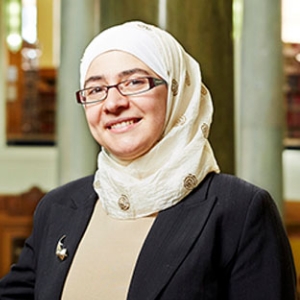
Embedding Authenticity, inclusivity and diversity in Language curriculum at advanced levels: a case study of Arabic
Dr Ruba Khamam is an Associate Professor of Arabic Language & Linguistics and Translation at the University of Leeds. She is currently the Director of Arabic, Islamic and Middle Eastern Studies in the School of Languages, Cultures and Societies.
She is a fellow of the Higher Education Academy (Advanced Higher Education HEA in the UK). She leads the core Arabic Language modules at final year and third year and oversees the provision of the Arabic year abroad where Arabic language UG students spend their second academic year.
She has received the prestigious fellowship of the Leeds Institute for Teaching Excellence for her outstanding teaching enhancement project for 2020-2022. The project focuses on Civic partnership and employability in a language curriculum and aims to maximise impact on the community.
Dr Khamam worked on different cutting-edge research activities and presented in a number of well recognised national and international conferences.
Ruba has obtained a PhD in Linguistics from the department of Linguistics and Phonetics at the University of Leeds in 2012. Her research interests and expertise span across a range of linguistic fields including, Cross-cultural and Inter-cultural Pragmatics, Linguistic Politeness and Impoliteness, (Im)politeness in Translation, Speech Acts, Politeness and Second Language Learning and Use, Teaching and Learning Arabic as a Second Language, and English/Arabic Translation.
This paper will shed light on integrating a range of authentic and inclusive approaches in designing, delivery and assessment of an Arabic language teaching curriculum in the light of the rapidly changing Higher Education Environment. The aim is to provide student learners of Arabic with a truly immersive and transformative language acquisition experience.
The current paper will share the student-centred pedagogies for learning, assessment and feedback introduced and adopted in the case study of advanced Arabic Language module. Then, the discussion will focus on the impact the implemented changes had on enhancing students’ level of engagement with their learning and overall progress they made.
The session is meant to refresh teachers and practitioners’ knowledge of designing inclusive Arabic language curriculum. They will gain rich insights about tested up to date inclusive and authentic methods for teaching Arabic Language. They will go through a journey of exploration and check examples of innovative ways to encourage students’ participation and involvement in diverse aspects of curriculum design, delivery, assessment and feedback in an enjoyable and convenient way for both teachers and learners in the process.
The ultimate goal is to build a community of confident practitioners and share good practice based on pedagogically tested methods.
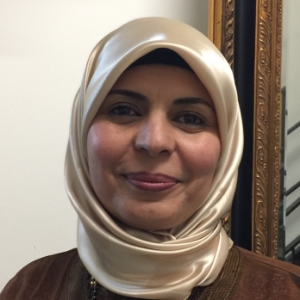
An action-oriented approach: embracing complexity in Arabic language pedagogy
Salwa Mohamed is a co-coordinator of the Institution Wide Language Programme (IWLP) at Manchester Metropolitan University. She has a PhD in Applied Linguistics, PGCert in Higher Education and is a senior fellow of the Higher Education Academy and a consultant with Eaquals. Salwa has extensive experience teaching Arabic in the Higher Education sector and, previously, in mainstream education in the UK. Her research interests range between language pedagogy and SLA with a focus on curriculum design, teaching materials development and the role of assessment in language teaching. She also researches plurilingualism and pluricuturalism in foreign language education.
The action-oriented approach (AOA) was initially introduced by the Common European Framework of Reference for Languages: learning, teaching, assessment (CEFR) (Council of Europe [CoE] 2001). However, the approach was not adequately elaborated in the 2001 CEFR publication, resulting in its insufficient development and vulnerability to different interpretations (Piccardo and North 2019). The AOA has been predominantly interpreted within the realms of Communicative Language Teaching and/or Task-Based Language Learning. Nevertheless, significant progress has been made in the past two decades through theoretical advancements and research, enriching the CEFR's AOA and establishing it as a multidimensional framework that recognizes the complexity of language and the language learning process.
The AOA represents a paradigm shift, advocating for an agentic, holistic, and diverse approach to language learning. Within this perspective, language is regarded as “situated social action” (Piccardo and North 2019: 231), language learning as a constant mediation between the external social dimension and the internal mental context, and language learners as social agents who actively assume responsibility for their own learning journeys.
In this presentation, I will highlight the theoretical foundations of the AOA, focusing on the influence of the sociocultural theory (Lantolf and Pavlenko 1995) and a complex ecological perspective (van Lier 2004; 2007), which together propose an understanding of language learning as a complex phenomenon that emerges in a non-linear fashion. Communication in this view is an authentic and creative act of languaging enabling expression and creation of new meanings while navigating unforeseen and perpetually evolving situations. This contrasts with perceiving language merely as a collection of functions to be mastered. I will, further, explore the implications of these perspectives on Arabic learning/teaching, curriculum design, and assessment methods.
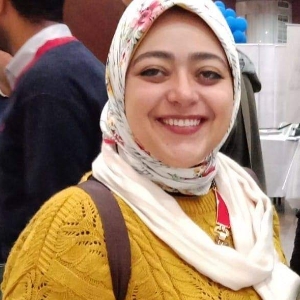
Cultural studies and teaching literature with the communicative approach
- PHD2023, a doctoral thesis entitled: ""Space and its semantic dimensions in Ammar Ali Hassan's fictional works, a study from the perspective of cultural geography.
-Pre-PhD, 2016, with grade excellent, credit hours system, Department of Arabic Language and Literature, Literary, Critical and Rhetorical Studies Division, Faculty of Arts, Alexandria University.
- Holding a master’s degree, 2014, with grade very good, credit hours system, from the Department of Arabic Language and Literature, Literary, Critical and Rhetorical Studies Division, Faculty of Arts, Alexandria University.
- Master's thesis entitled: “Contemporary Narrative Discourse in the Women's Novel, Radwa Ashour as a model, an analytical and critical study”.
- Pre-Masters program, 2010, grade very good, credit hours system, Department of Arabic Language and Literature, Division of Literary, Critical and Rhetorical Studies, Faculty of Arts, Alexandria University.
- Bachelor of Arts 2008, with grade good, Department of Arabic Language and Literature, Alexandria University.
- Alexandria University grant to study the course of communicative curriculum strategies in teaching Arabic to foreigners, 2015-2016; TAFL Center, Alexandria University.
- Strategies of the communicative approach in teaching Arabic to foreigners, 2016; TAFL Center, Alexandria University.
- OPI Language Proficiency Diploma, 2018, from the ACTFL Center.
- Certified Arbitrator Certificate 2019, from the ACTFL Center.
تعتمد مناهج التدريس داخل الجامعات المصرية على المنهج التقليدي للتدريس، ولا يوجد بادرة أمل واضحة لتطوير تلك التقنيات التعليمية رغم التطور الي ظهر على الساحة، وأظهر عجز هذه المناهج على مواكبة العصر، وتقديم طرق تدريسية خارج الزمن.
يقوم الأساتذة بتدريس تاريخ الأدب العربي القديم خلا المرحلة التأسيسية، من العصر الجاهلي مرورا بالعصر الأموي والعباسي وأدب المغرب العربي وعصر الدول والإمارات إلى العصر الحديث، وتدرس مناهج البلاغة العربية من علوم (المعاني والبيان والبديع)، ويشار إلى تاريخ الأدب العربي المعاصر خلال فترة قصيرة بطريقة سرد المعلومات فقط.
وبما أن التكنولوجيا قد اجتاحت العالم وغيرت من كافة تفاصيله خلال العقدين الأخيرين، نحتاج إلى مواكبة هذا التطور حتى تستمر الجامعات في تقديم دورها الرائد ومتابعة الحدث وتطوير مناهج الأساتذة لتناسب الجيل الحالي، وحتى نتمكن من متابعة التطور اللغوي وما تبعه من تطور للغة المعاصرة التي تتغير مفرداتها المستخدمة في اللغة المعيارية المعاصرة خلال فترات زمنية قصيرة وليس خلال عقود كما كان يحدث خلال الفترة الماضية.
وبما أن الأدب هو نتاج ثقافة الشعوب، يتطور ويتغير بتغير الفتراتت الزمنية، -وبما أن الشعر هو ديوان العرب القديم والرواية هي الديوان الحديث- تتطور العملية الإبداعية هي الأخرى ونحتاج إلى دارسين وباحثين يدرسوا ويتتبعوا التطور الذي ينعكس بدوره على الاعمال الإبداعية وتقنياتها.
هذا البحث يقدم مجموعة من الأفكار التي تساعد في تدريس الأدب العربي القديم والجديد بطريقة تواصلية وأهداف واضحة للتدريس، تساعد الطلاب على دراسة تاريخ الأدب، ودراسة محطات واسعة من تاريخه، مما يتيح ويساعد على تدريب الطلاب على تحليل المنتج الإبداعي بالطرق القديمة والجديدة وتطوير مهاراتهم اللغوية، ومعرفة تاريخ الأدب والنقد. وتأهليهم لمواكبة متطلبات الحياة الجديدة.
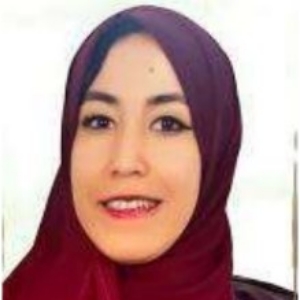
Going Back to the Roots: Ancient Egyptian Words in Today’s ECA and MSA: Impact and Application
I received my MA in Teaching Arabic as a Foreign Language from the American University in Cairo. Am an adjunct instructor at the American University in Cairo. Also, am a teacher trainer at the School of Continuing Education at the American University in Cairo in the Career Certificate of Teaching Arabic as a Foreign Language Program. I taught in Middlebury College and Al-Akhawayn University in Morocco.
Egyptian Colloquial Arabic (ECA) is a widely understood and famous colloquial dialect in the MENA Region. The reason for this popularity boils down to the huge impact of the media in all its forms on the MENA region.This popularity is one of the main reasons foreign students’ are interested in learning it. But not only does its significance due to its huge impact in the present, but also because it is affected by and descendent from the most ancient civilization on Earth - the Ancient Egyptian Civilisation. There are many words presented in this study that are still widely used on a daily basis by Egyptians, and surprisingly some of these words are used in Modern Standard Arabic (MSA) on a frequent basis. This bridging between Ancient Egyptian words, ECA, and MSA is a perfect example to highlight the component of culture and identity while teaching in the AFL classroom. The paper investigates these research questions: (1) What is the impact of Ancient Egyptian language on today’s MSA and ECA?; and (2) What are the implications of this study on the historical, cultural, and pedagogical level? The study investigates 100 words that were widely used in Ancient Egypt and are still used in ECA and MSA. The implications of this study are used to demonstrate many things: language identity, historical implications, and culture teaching as language is one of the most important carriers of culture. The study also shows how to use these words in the foreign classroom context.
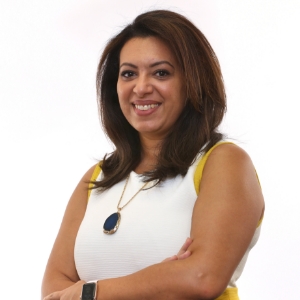
Towards a new, holistic vision for an Arabic language programme at the school level: combining and modernising curriculum, resources, teacher training and assessment
Dr Saussan Khalil is a Senior Teaching Associate of Arabic at the Faculty of Asian and Middle Eastern Studies, University of Cambridge, UK. She is the founder of Kalamna CIC (www.kalamna.org) and the author of Arabic Writing in the Digital Age: towards a theoretical framework (Routledge, 2022)
The Arabic language landscape has been and still is changing dramatically. The models of “native” and “foreign” language teaching are no longer sufficient in developing curricula and resources inside and outside of the Arabic-speaking world.
Within the Arab World low literacy and attainment levels are consistently reported through international standardisation tests (OECD, 2018). We are witnessing more and more the influence of foreign languages in the day to day lives of children, particularly with the increase in the number of international schools, as well as the rise of the internet and the importance of computer – and therefore English – literacy.
Outside of the Arab World, the rise of second and third generation immigration, as well as the growing disparity between the quality of Arabic language teaching and learning compared with other languages, means teachers, parents and students are struggling more than ever before to achieve a quality Arabic language education.
We have adopted a research and evidence based approach to address the myriad issues facing Arabic language teaching and learning at the school level, both inside and outside the Arab World, resulting in an exciting new curriculum with accompanying resources, a teaching training programme and assessment framework.
The approach relies on a two-pronged approach: addressing the socio-linguistic reality of Arabic, and incorporating modern teaching methods and approaches.
The result has been met with widespread positive interest and feedback from learners, parents, schools and publishers alike, as well as from within the academic community.

Arabic Study Abroad Programs - the Case of YSU Arabic Studies Students in Jordan
Setrag Hovsepian is an adjunct lecturer at the American University of Armenia, a former lecturer at Yerevan State University, and the former Director of Al-Babtain Center at Yerevan State University, Armenia. Setrag is currently pursuing a Ph.D. in Educational Policy and Evaluation at Mary Lou Fulton Teachers College, Arizona State University, the United States.
Setrag holds a BA from Damascus University and an MA from the American University of Armenia. He also holds a teaching diploma from Cairo University. He serves as a graduate research assistant and works on projects including Higher Education Partnership – Morocco, Syrian Refugees in Arizona, and “Turn it Around! Flashcards for Education Futures”. His research interests include teaching, teachers of endangered languages, education in emergency situations, Armenian and Arabic studies, and refugee education in the MENA region.
P.S. The abstract is presented by Alice Eloyan & Setrag Hovsepian
Learning Arabic in a non-Arabic-speaking country where there are limited chances to use the language in an authentic way.
On the other hand, according to Kinginger (2009), studies on study abroad have revealed wide variations in students' levels of contact with locals and their linguistic performance.
The paper finds out the challenges Yerevan State University students face during the study abroad program regarding linguistic and cultural challenges.
Diglossia, the local spoken dialects, and lack of exposure to the Arab culture within its context are some of the challenges they try to overcome, as reported by former participants of the Arabic study-abroad university program through a survey and a focus group.
Moreover, the paper seeks to reveal whether there are differences in those challenges according to the gender of the students and the previous knowledge they get from their home universities before participating in the study-abroad program offered through their university.
"At first, when we arrived in Jordan, it was complicated for us to speak Colloquial Arabic because it was different from what we had learned at home university. Nevertheless, then, gradually, we learned it." a former participant from the study reported.

Exploring the Virtual Global Classroom Experience: Arabic Heritage Learners’ Reflections.
Shahira Yacout is a Senior Arabic Language Instructor II in the Department of Arabic Language Instruction (ALI) at The American University in Cairo. She holds an MA in Teaching Arabic as Foreign Language (TAFL) from the American University in Cairo and received her PhD in Curricula and Teaching Arabic Language Methodology from Ain Shams University. Yacout taught different skills, many levels and participated in forming new courses in ALI. Moreover, she contributed to materials development projects for a number of universities and schools. She has presented papers in several national and international conferences and participated in workshops in Egypt, the United States and Emirates. Yacout is an examiner for the International Baccalaureate Organization (IBO) since 2003, in which she is involved in the marking and moderation process. She also has experience in immersion programs; as she taught in Middlebury School for several years and in Japan summer 2016. Based on her effectiveness in Teaching Arabic as a Foreign Language, in May 2012 she was granted CASA Excellence in Teaching Award. Her latest publications was an article released in 2020 entitled “Are Badawi’s Levels of Contemporary Arabic Reflected in Facebook?

Using Artificial Intelligence Applications in Arabic Classrooms
Shaimaa Nabil Hassanein is a native of Cairo, Egypt, and holds a Master of Arts in Teaching Arabic as a Foreign Language from the American University in Cairo. During her master’s study, she has developed her teaching skills, acquired new teaching methodologies, and utilized new approaches of integrating technology and culture in language classrooms. Working at the American University in Cairo has enabled Shaimaa to communicate and interact with students on a daily basis. She has taught several Arabic and culture classes for both heritage and foreign learners in both the US and Egypt. Shaimaa's research interests include digital transformation & integrating technology in language teaching, second language acquisition, second language pedagogy, teaching methodologies & assessment, and the effect of language on students’ intercultural competence.
Artificial Intelligence (IA) applications, such as ChatGPT and Bard, are set to radically change various fields and industries, and education is no exception. However, this new technology poses a significant challenge to some schools in the US, to the extent that it has been banned in some school districts, such as the New York City Public Schools (NYCPS) and the Los Angeles Unified School District. Despite this, banning the use of AI may not be the answer in higher education settings. Instead, utilizing it wisely and incorporating it into the curriculum may be the solution. This utilization entails upskilling teachers and curriculum developers to be competent in using AI along with extensive efforts and agility to create new practices using AI.
In this presentation, we will showcase the latest applications of AI, including ChatGPT, Bard, Perplexity, and Pi Chat, among others. Furthermore, we will delve into the challenges that these applications pose to higher education. Finally, we will discuss potential strategies for integrating AI into Arabic language classrooms. We will share how we have used artificial intelligence, such as ChatGPT and Bard, in our classes. We will showcase ways to help students build and activate new vocabulary, practice writing, and reading comprehension, and utilize AI apps as conversation partners. In addition, we will demonstrate Arabic language development as a result of AI integration.
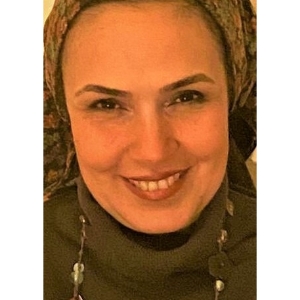
Damage Control; Undoing in College some Wrongs of Teaching Arabic from K to 16
Shereen El Ezabi is a senior instructor of Arabic at the Department of Arabic Language Instruction, ALI, at the American University in Cairo. Since 2000, she has been teaching AFL students all levels and skills of Modern Standard Arabic and Egyptian Colloquial, in addition to advanced AL courses for AUC undergraduates and intensive summer courses at Middlebury College, USA. Her special fields of interest are translation studies and Arabic morphology. She has a BA in English and Comparative Literature and an MA in Teaching Arabic as a Foreign Language, both from AUC. She has published translations in the Alif Journal of Comparative Poetics, and the online Monumental Inscriptions of Historic Cairo project, and has written critical reviews for the Cairo International Festival for Experimental Theater magazine. She is the 2008 recipient of the CASA Award for Excellence in Language Teaching.
This presentation showcases the modules designed for a university AL course which aim at enhancing native Arabic speakers’ productive skills in Modern Standard Arabic, mainly through mitigating the sense of alienation from this language variety felt by a majority of them. The presenter establishes the existence of such sentiment on the part of the students through analysis of their self-reporting on their relationship with MSA, tracing its origins to the largely negative experiences they describe vis a vis MSA over the course of their K to 16 schooling across the various systems of education in Egypt (national and international). Results of student surveys are shared, pinpointing the lack of confidence in their command of Arabic grammar, particularly syntax, but also morphology, as the main alienating factor. The second part of the presentation shares strategies and techniques employed to effect a reconciliation of sorts between students and MSA, aimed, ultimately, at enhancing their language skills. These strategies include rectifying the pervasive misconceptions they reveal about the perceived centrality of syntactic case-endings as a marker of overall proficiency. This is achieved by shifting learners’ focus, tasks and activities toward more functional aspects of effective communication. In addition, specific techniques and criteria for material selection are shared, demonstrating how students are trained to engage with the language in meaningful and personalized contexts such that even the more mechanistic aspects of the grammar which they had initially expressed resistance to are assimilated in an almost subliminal manner.

Pragmatic Competence and the Authenticity of Arabic OPI Role-plays
Stephen O’Connell is a language learning and assessment specialist with more than 20 years of experience in the field. He has taught English as a Foreign Language in South Korea, English as a Second Language in the U.S., and English for Specific Purposes in Ireland. His language testing experience includes creating proficiency assessments for K-12 students in the U.S. with WIDA at the University of Wisconsin-Madison and with Harcourt Assessment. He also has worked on language tests for adults with CaMLA and the English Language Institute at the University of Michigan. He holds a Ph.D. in second language acquisition from the University of Maryland, College Park and an M.A. in applied linguistics from Teachers College, Columbia University. His research interests include the assessment of speaking and listening and the use of TBLT for language instruction.
Among the challenges of teaching and assessing Arabic as a second language (L2) is its diglossic nature. The shift towards communicative language teaching has inspired numerous Arabic programs to adopt the Integrated Approach with its different models. However, some standardized assessments, such as the ACTFL OPI, continue to use MSA to evaluate spoken Arabic despite the question of authenticity and the potential impact to construct validity. Part of the speaking construct is pragmatic competence (e.g., Fulcher, 2003; Taguchi & Roever, 2017), and part of pragmatic competence is knowing which dialect or register to use in which contexts. Due to diglossia, it is particularly pertinent for Arabic learners to gain this competence and to know which variety is context-appropriate according to findings from Arabic sociolinguistics research. This study examines the perceptions of linguistic laypeople in order to obtain additional evidence about the issue of the inauthenticity of using MSA for everyday spoken interactions. Fifty L1 speakers of Levantine Arabic who are not trained as Arabic educators or evaluators (i.e., linguistic laypeople) were asked to judge the authenticity of learner performance on the role-play segment of the ACTFL OPI. The participants evaluated the role-play responses produced by ten L2 Arabic learners (5 Intermediate and 5 Advanced). The learner responses varied in their uses of MSA and CA, including MSA-only, CA-only and MSA-CA mixtures. Participants' evaluations were analyzed quantitatively through regressions and ANOVA and the participants’ explanations for their evaluations were analyzed qualitatively using a grounded theory approach. The study’s findings will be discussed in terms of implications for how Arabic oral proficiency should be assessed and the potential washback effect on L2 Arabic K-16 classroom instruction.

Artificial Intelligence (AI) Chatbots: Challenges and Opportunities in Teaching and Learning Arabic Writing
Wael Asfour is a teacher of Arabic as a Foreign Language (AFL) with more than seven years of teaching experience, including online teaching. He has obtained his master’s degree from the American University in Cairo (AUC) in 2017. Since he graduated from the AUC, he has had the chance to teach students from different nationalities, levels, ages, ethnic groups, and cultures. This was helpful to introduce a variety of ideas, and beliefs while teaching the language. Among his research interests are: Sociolinguistics, Second Language Acquisition, Computational Linguistics, and Instructional Technology in Language Teaching.
AI chatbots that use Large Language Models (LLMs) offer prospects for language teaching and learning. ChatGPT, Microsoft Bing AI, and Google Bard are examples of these chatbots that use LLMs to generate various types of content such as text and images in response to text-based or speech-based requests. This paper demonstrates the potential benefits and challenges of using these chatbots to enhance the teaching and learning of Arabic writing. Using Microsoft Bing AI as an example, the paper shows how teachers can use this tool to create diverse writing tasks for different proficiency levels and topics. For the learners, the tool can be used to accomplish some tasks such as finding academic resources for their writings, and summarizing the main points of these sources. The paper also identifies the main challenges of using AI chatbots in this context such as academic integrity for teachers and accuracy for learners. The paper concludes with recommendations to address these challenges and suggests some directions for future research.
Keywords
Large Language Models, LLMs, Artificial Intelligence, AI, Chatbot, Arabic language teaching, Arabic language learning

مسرحة المناهج في تعليم العربية في المدارس الدولية